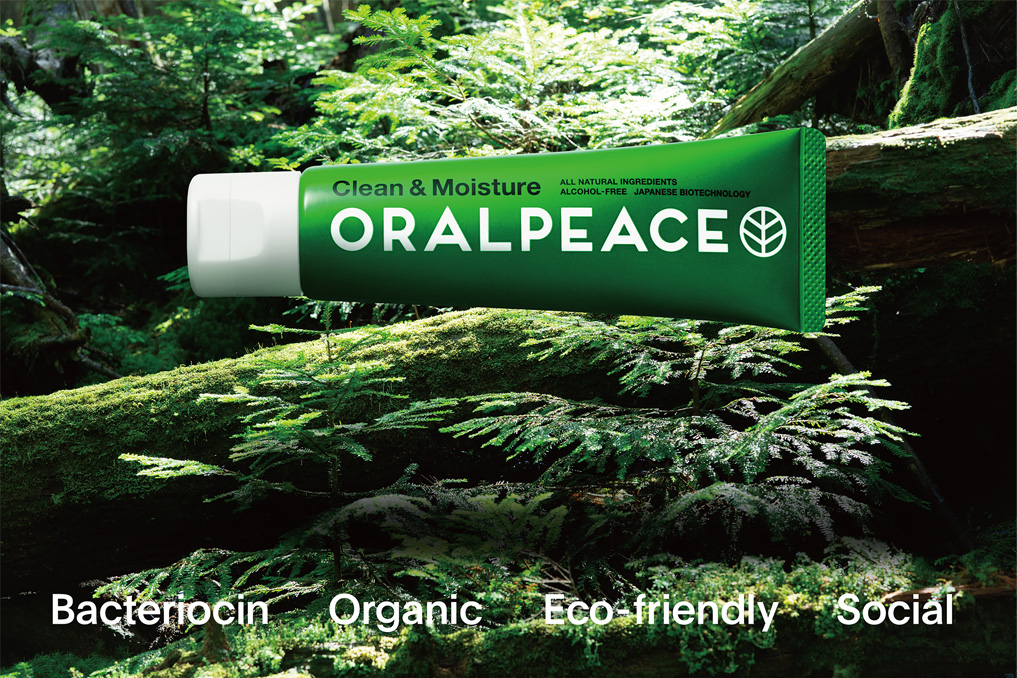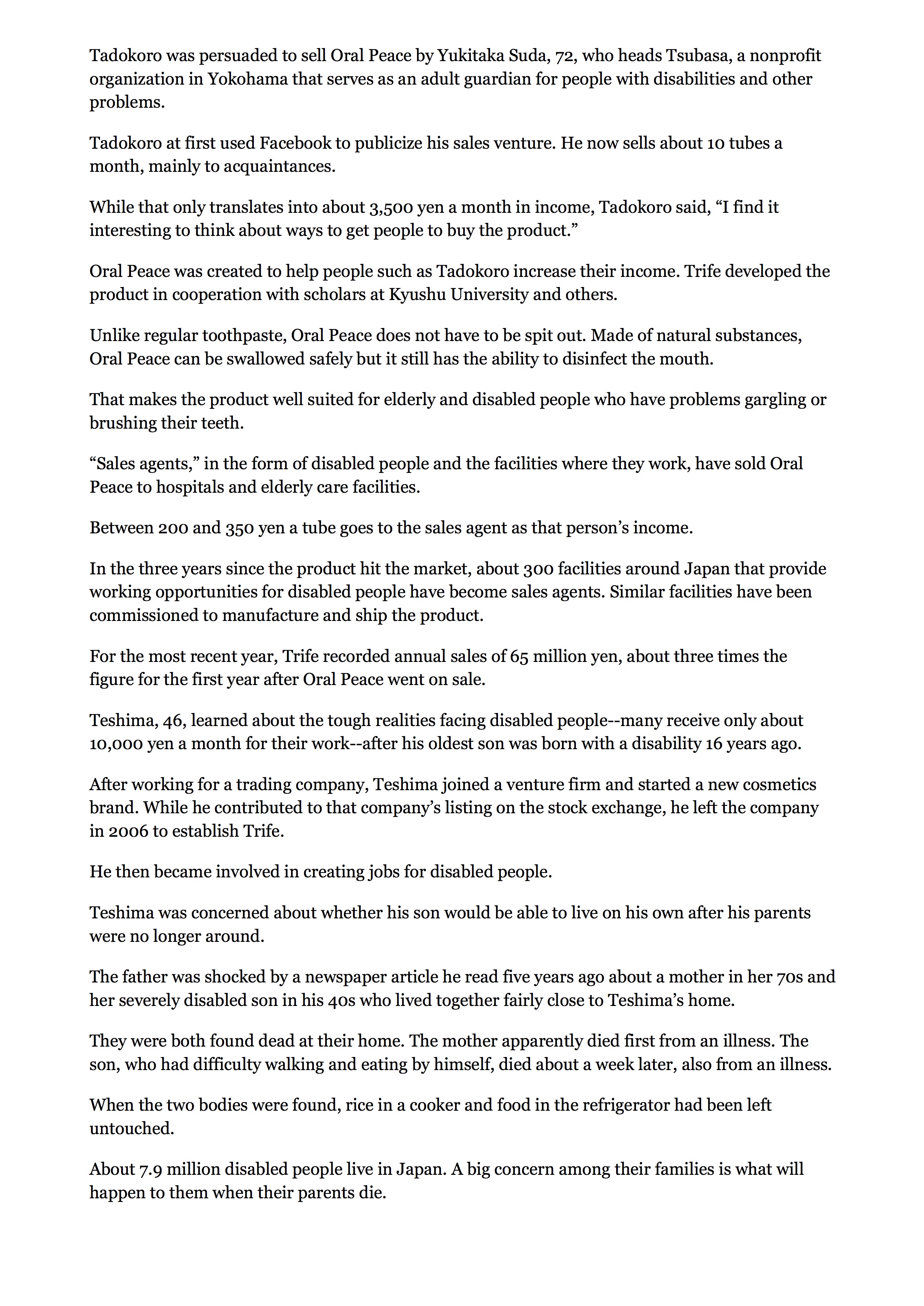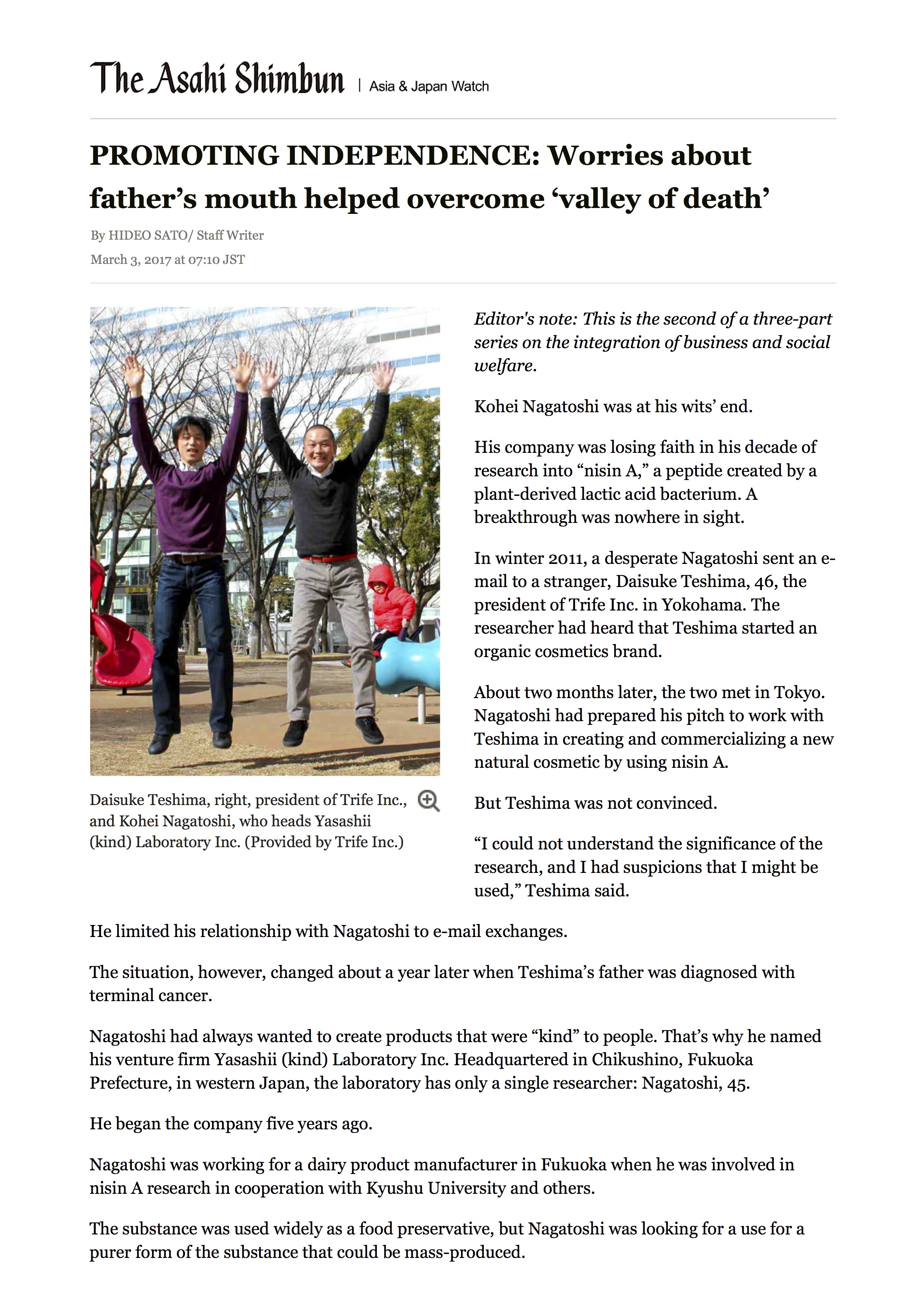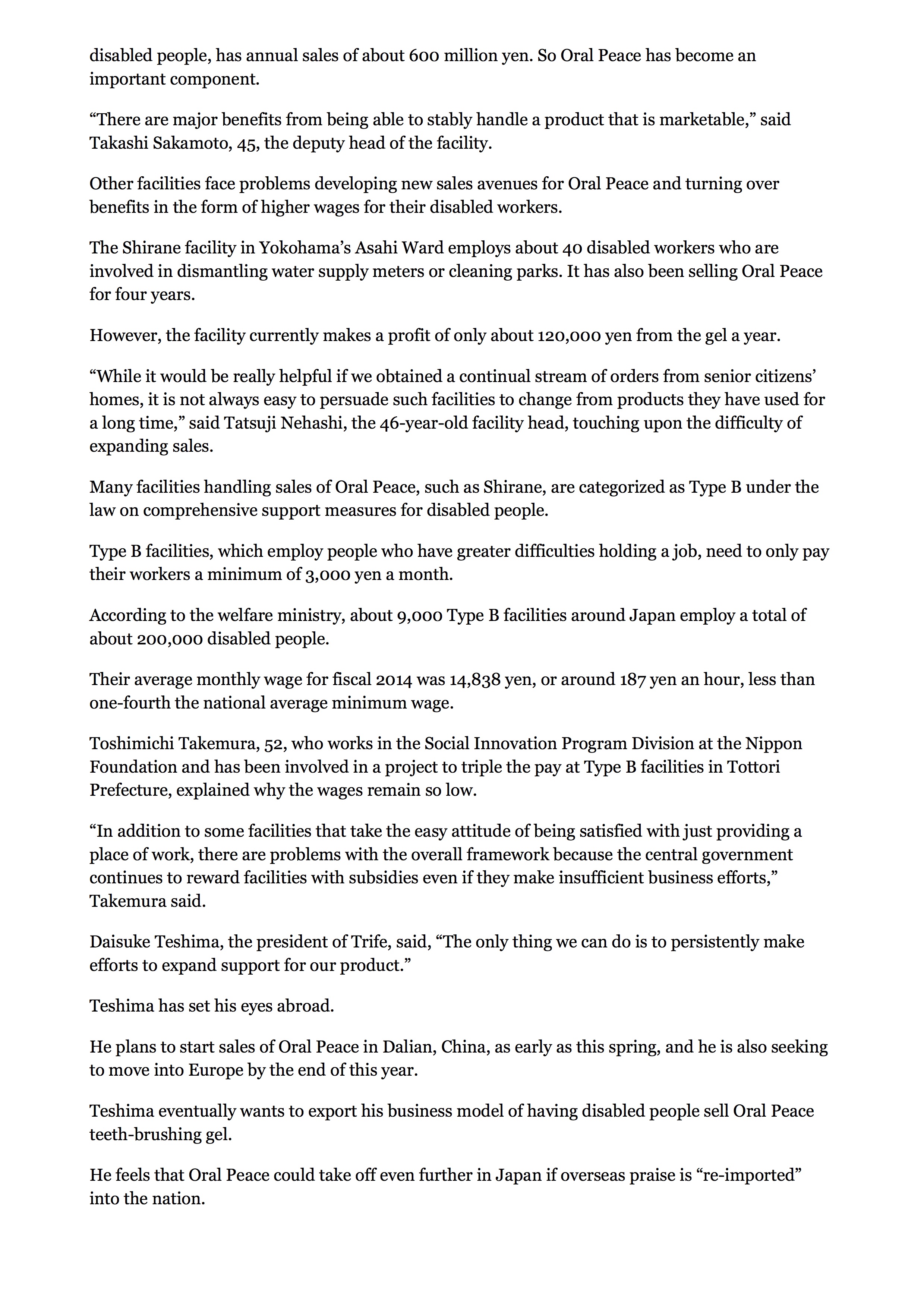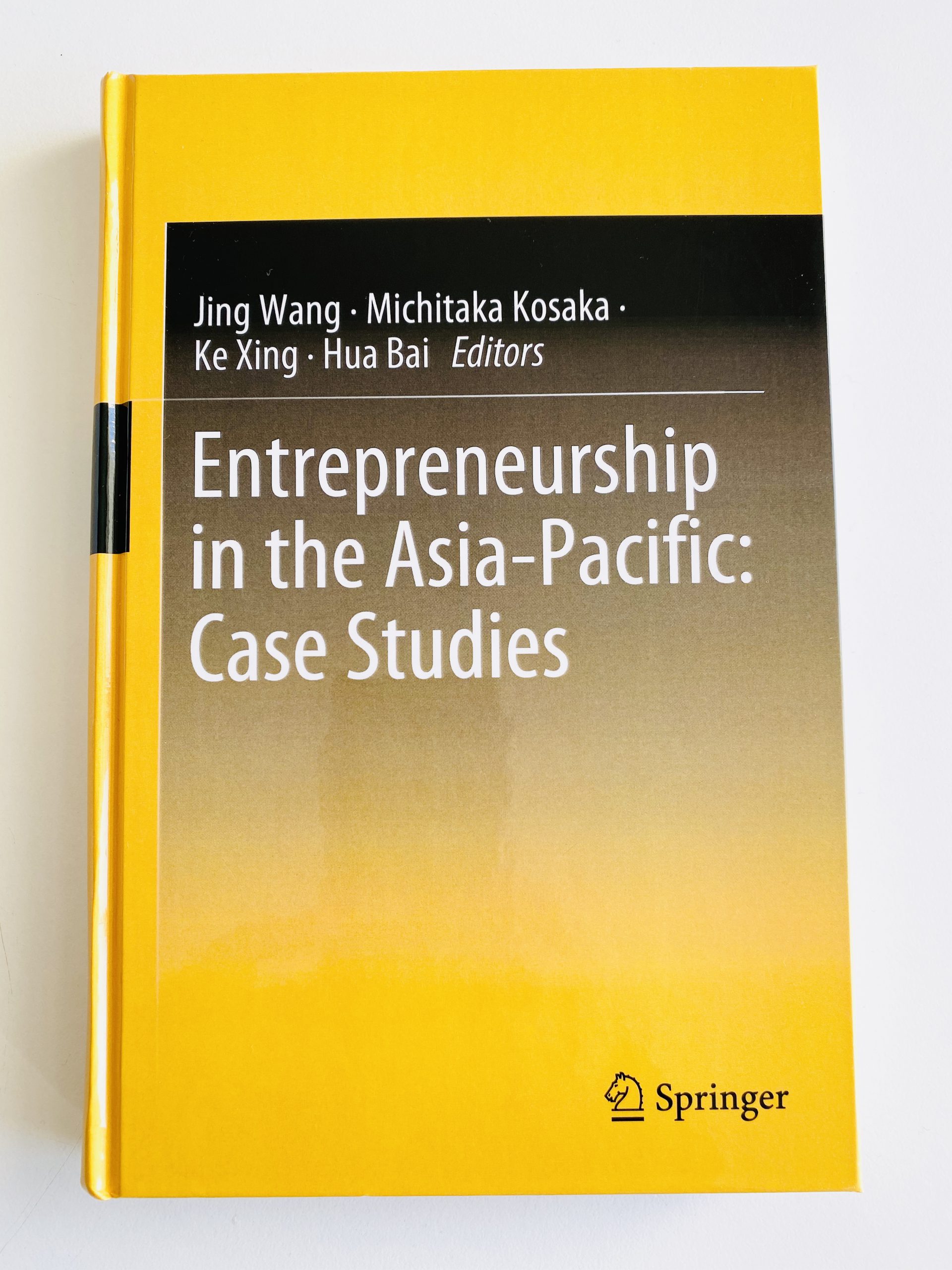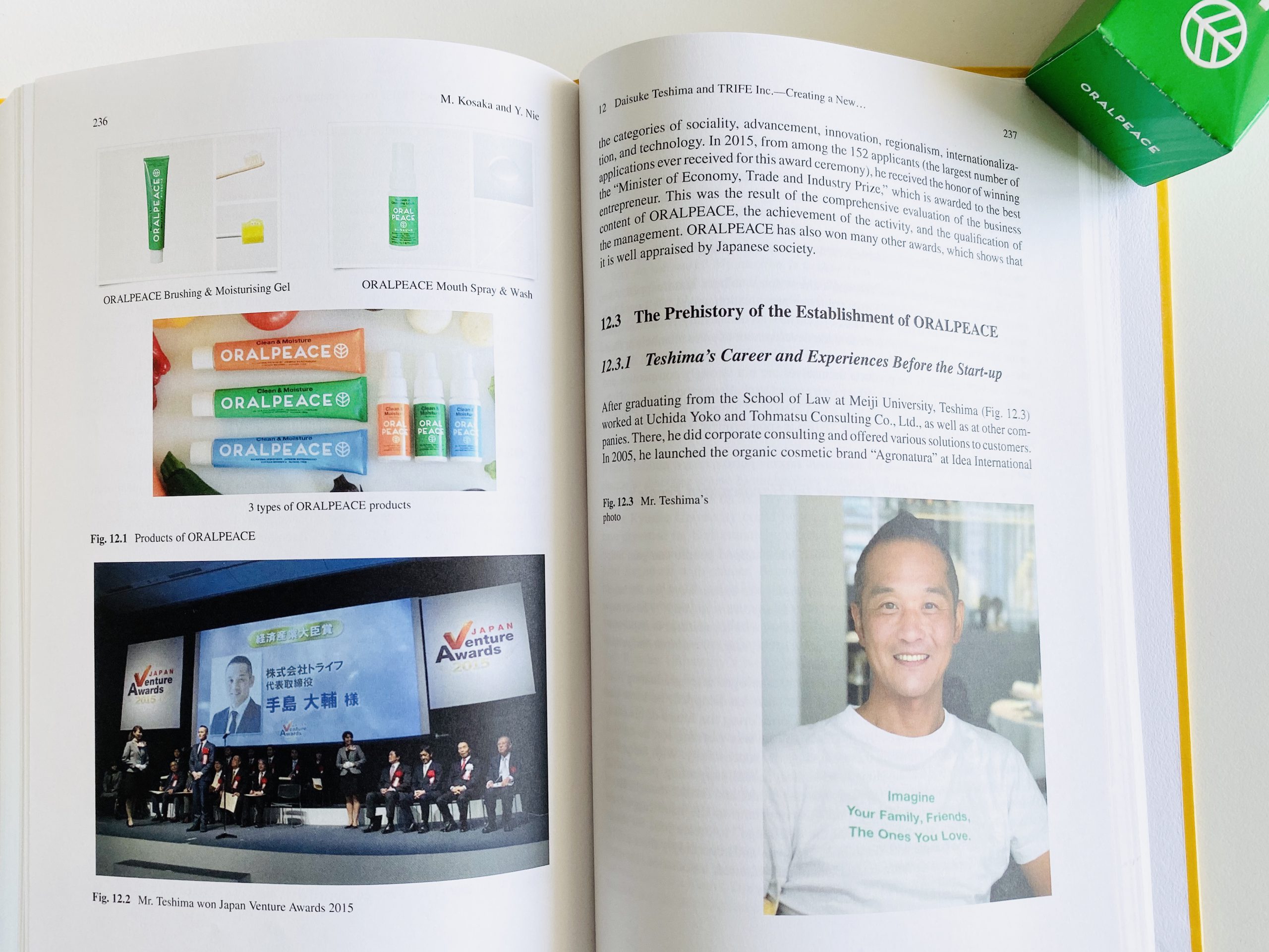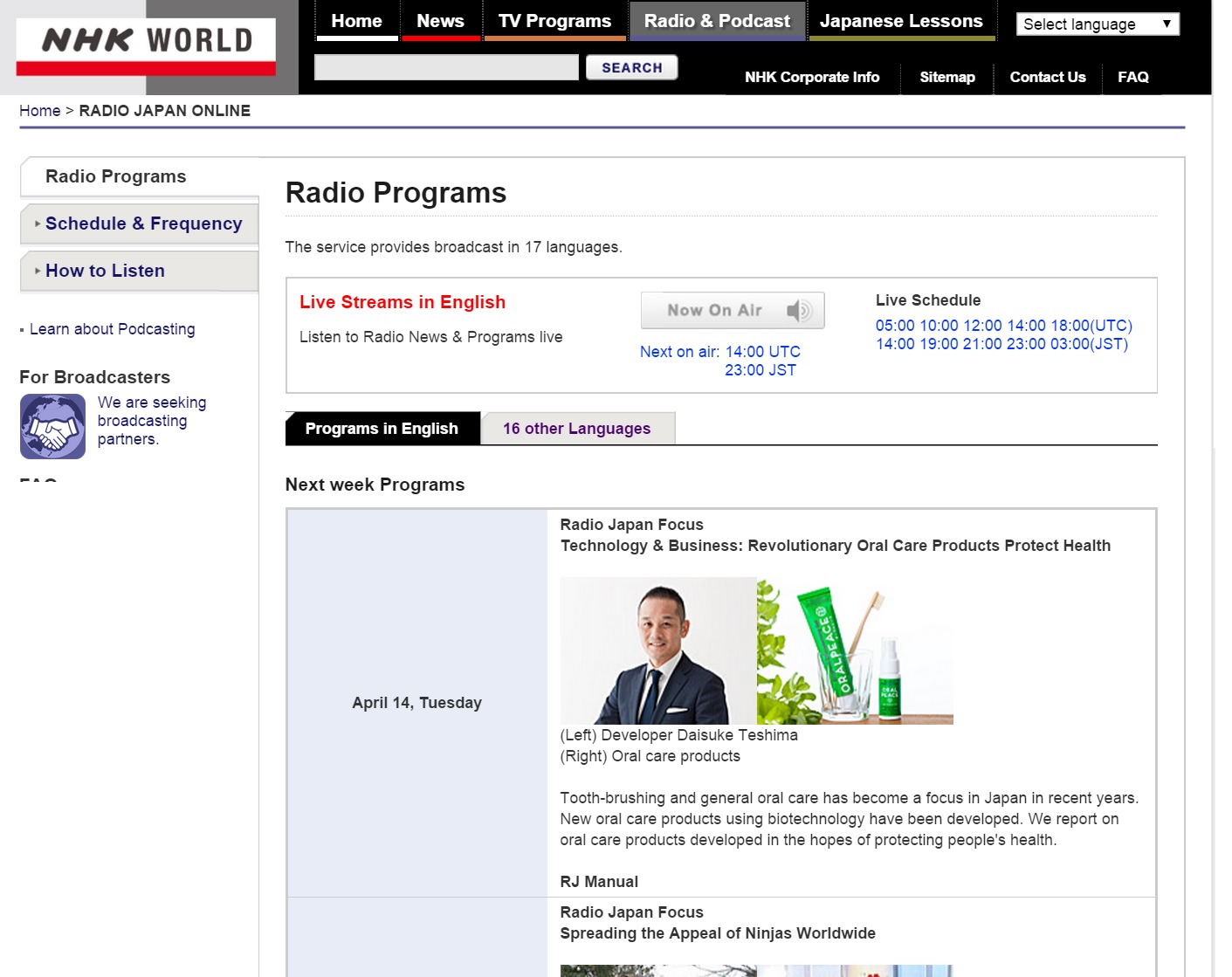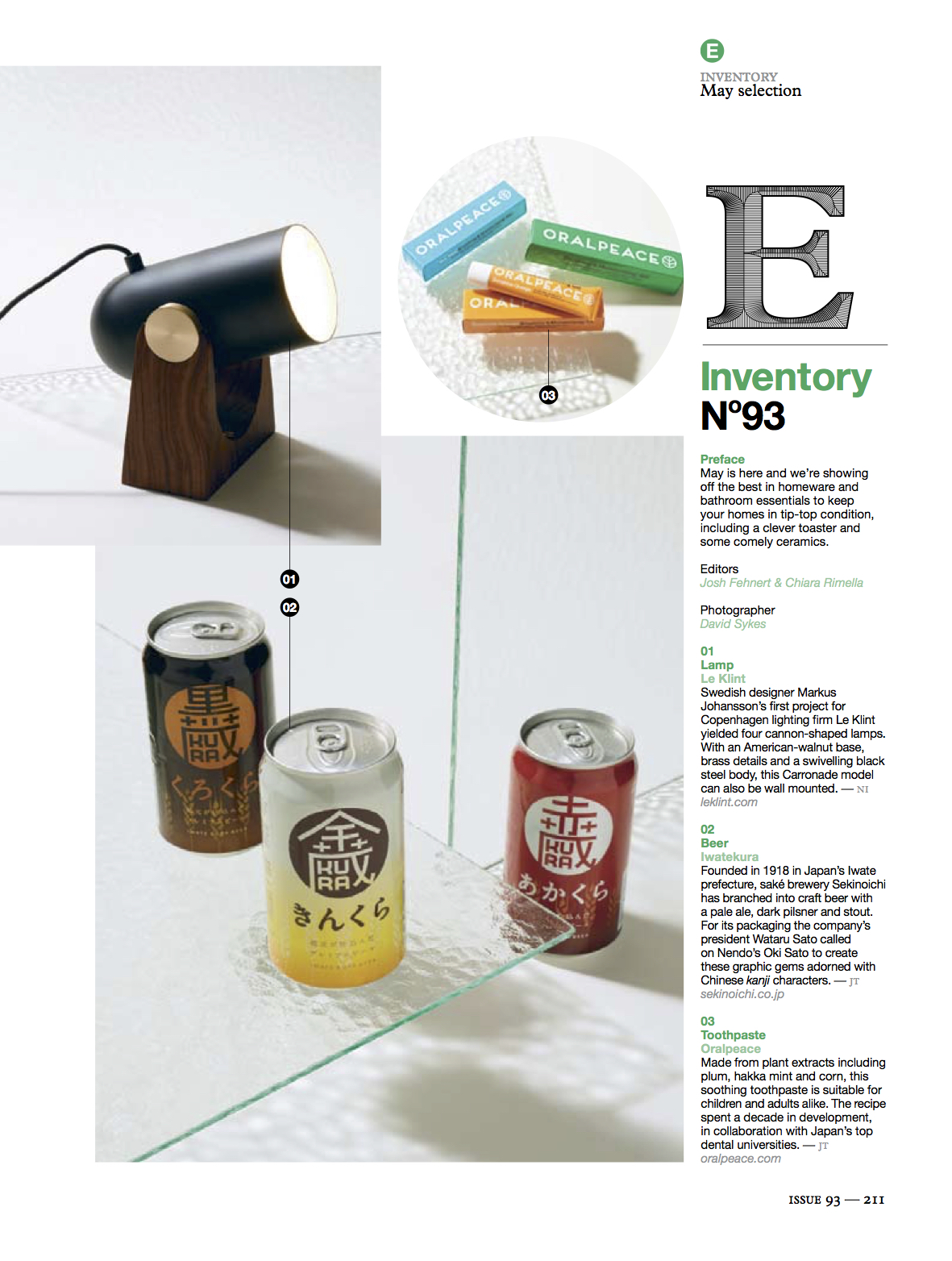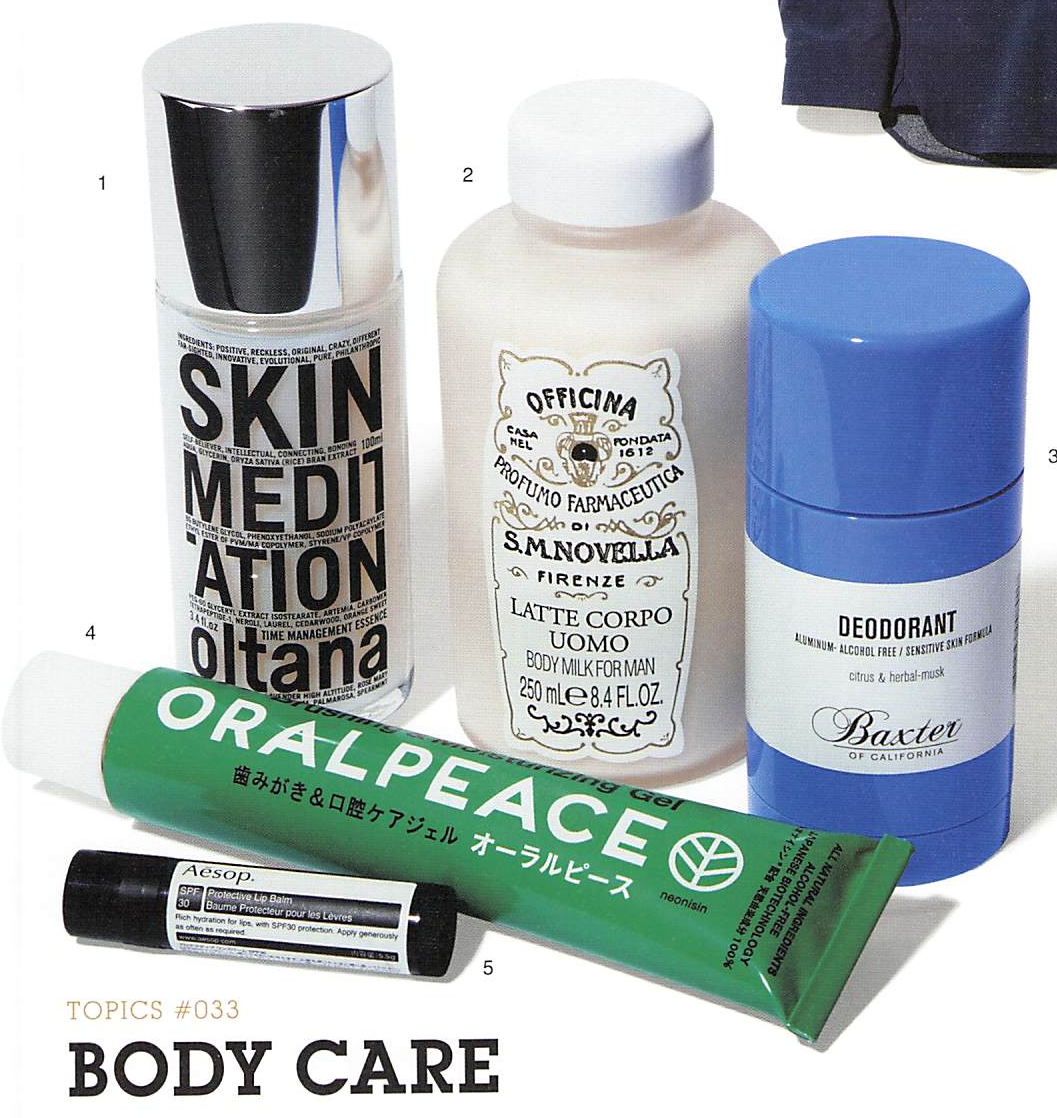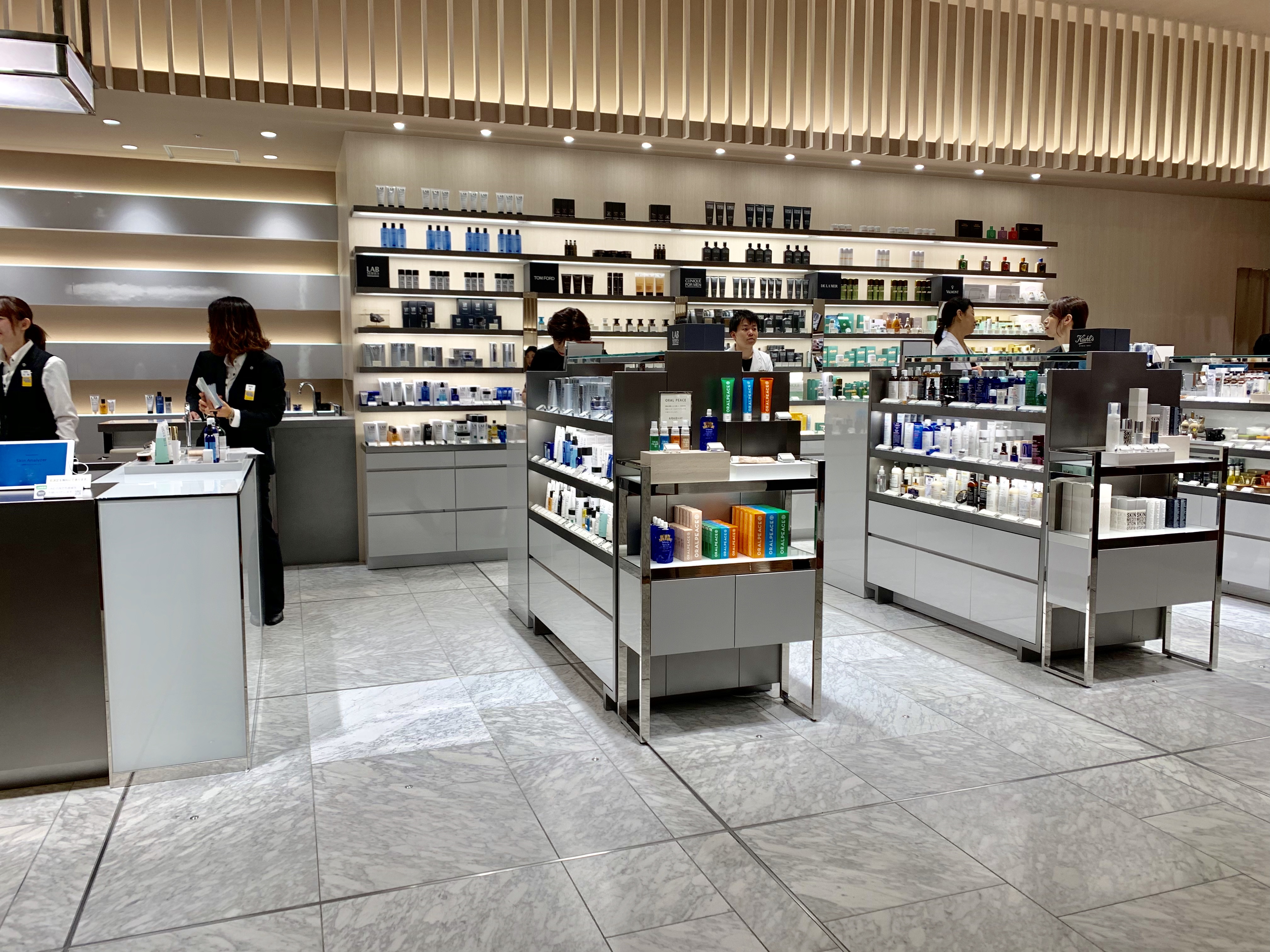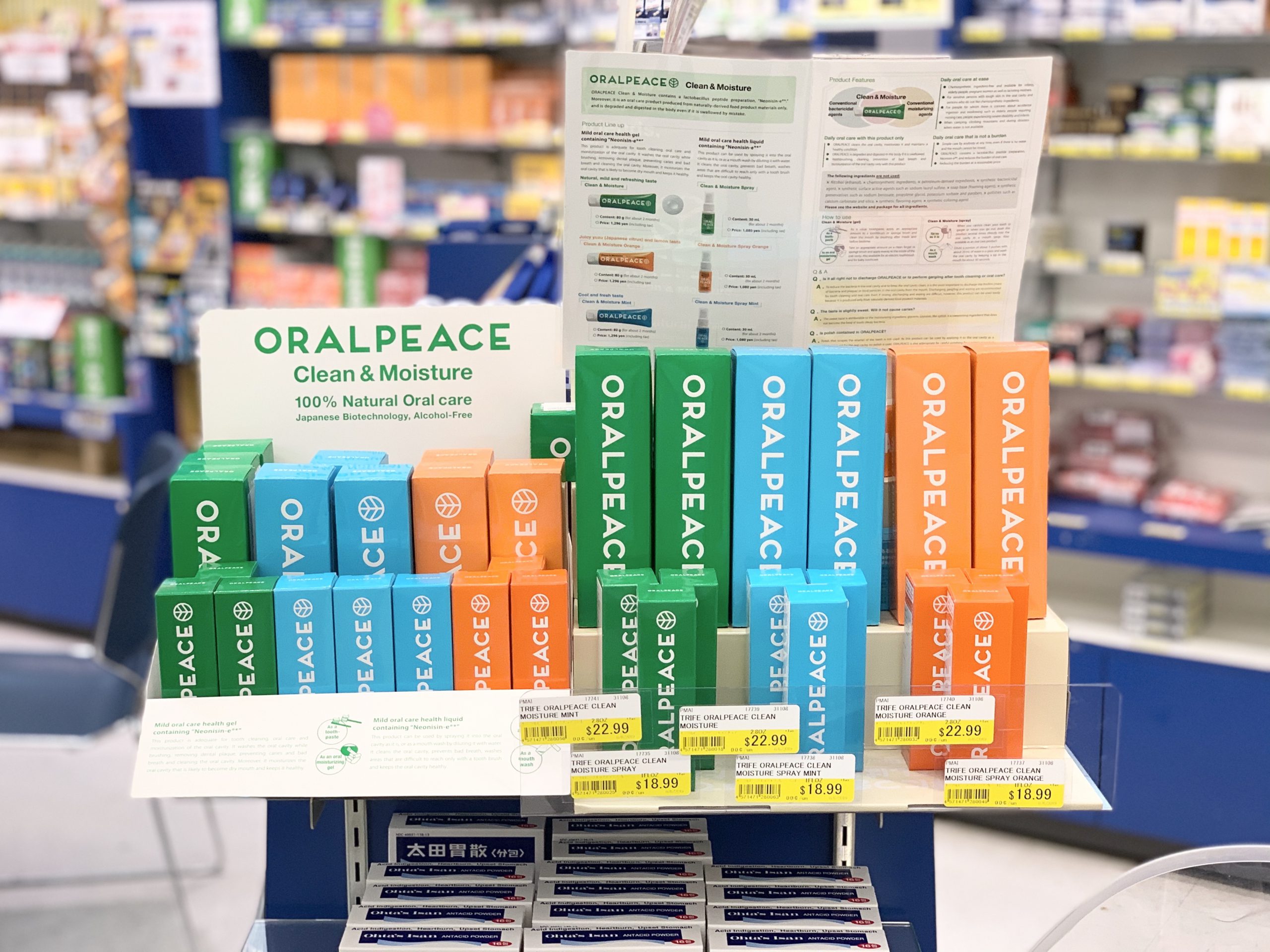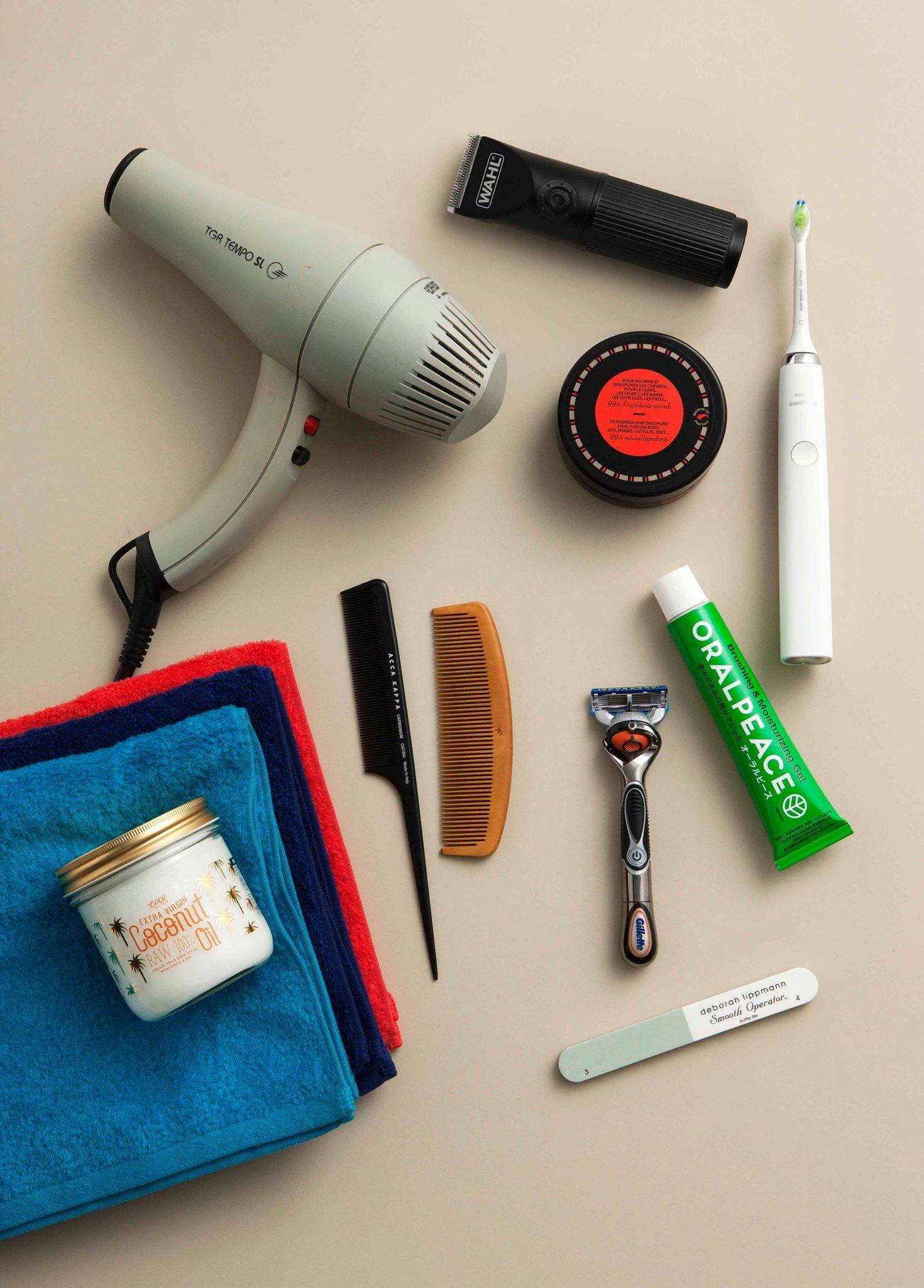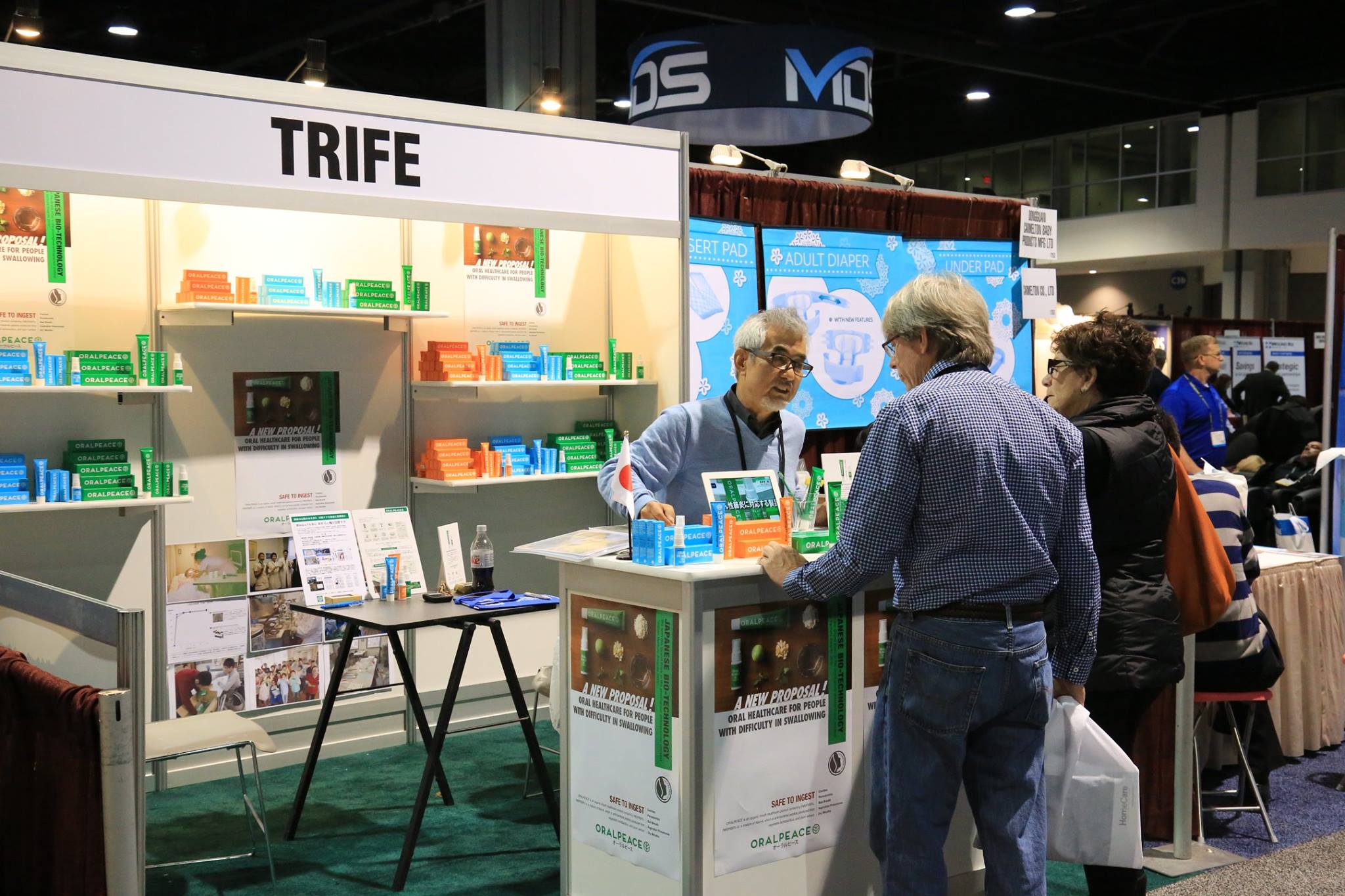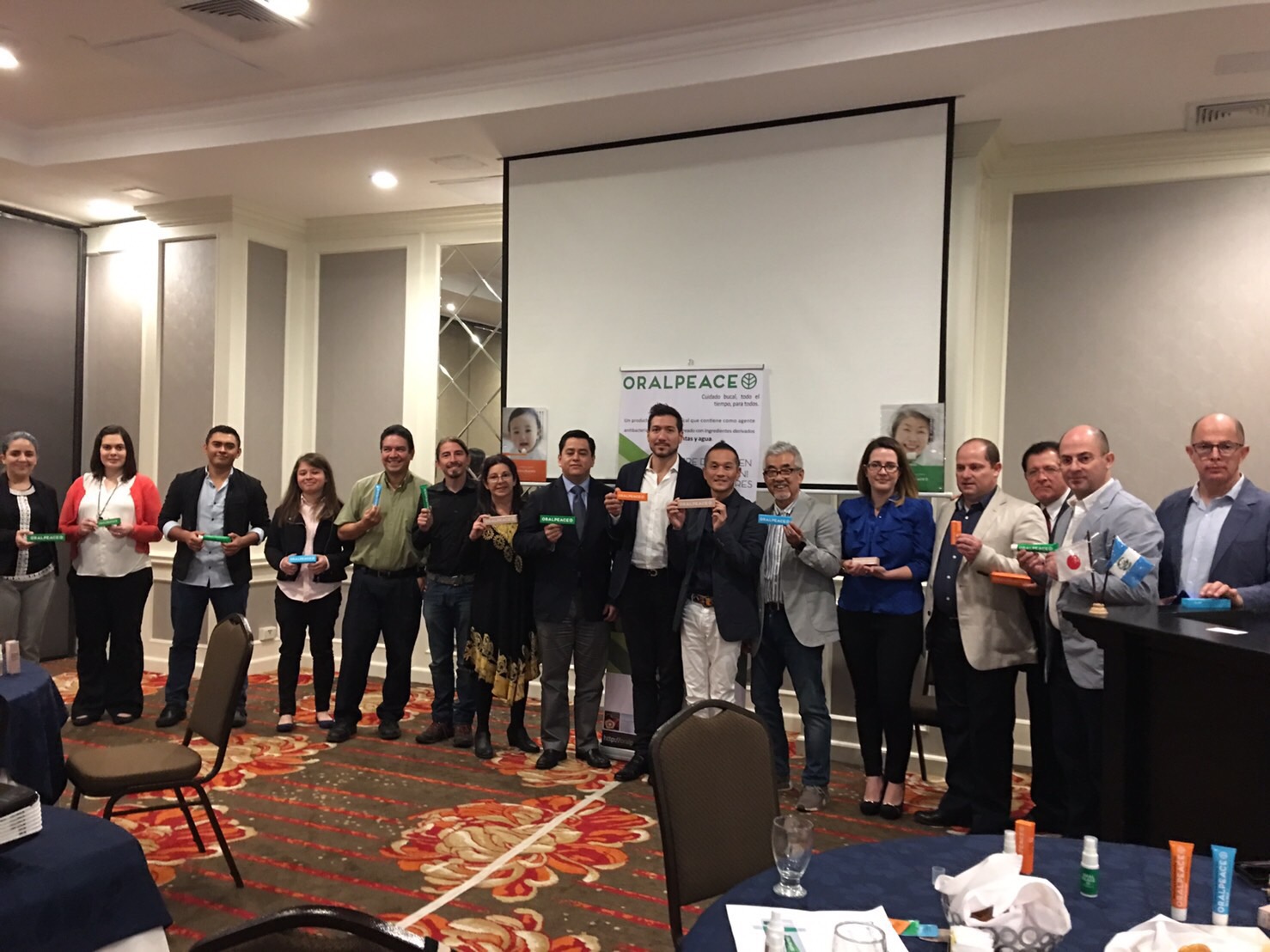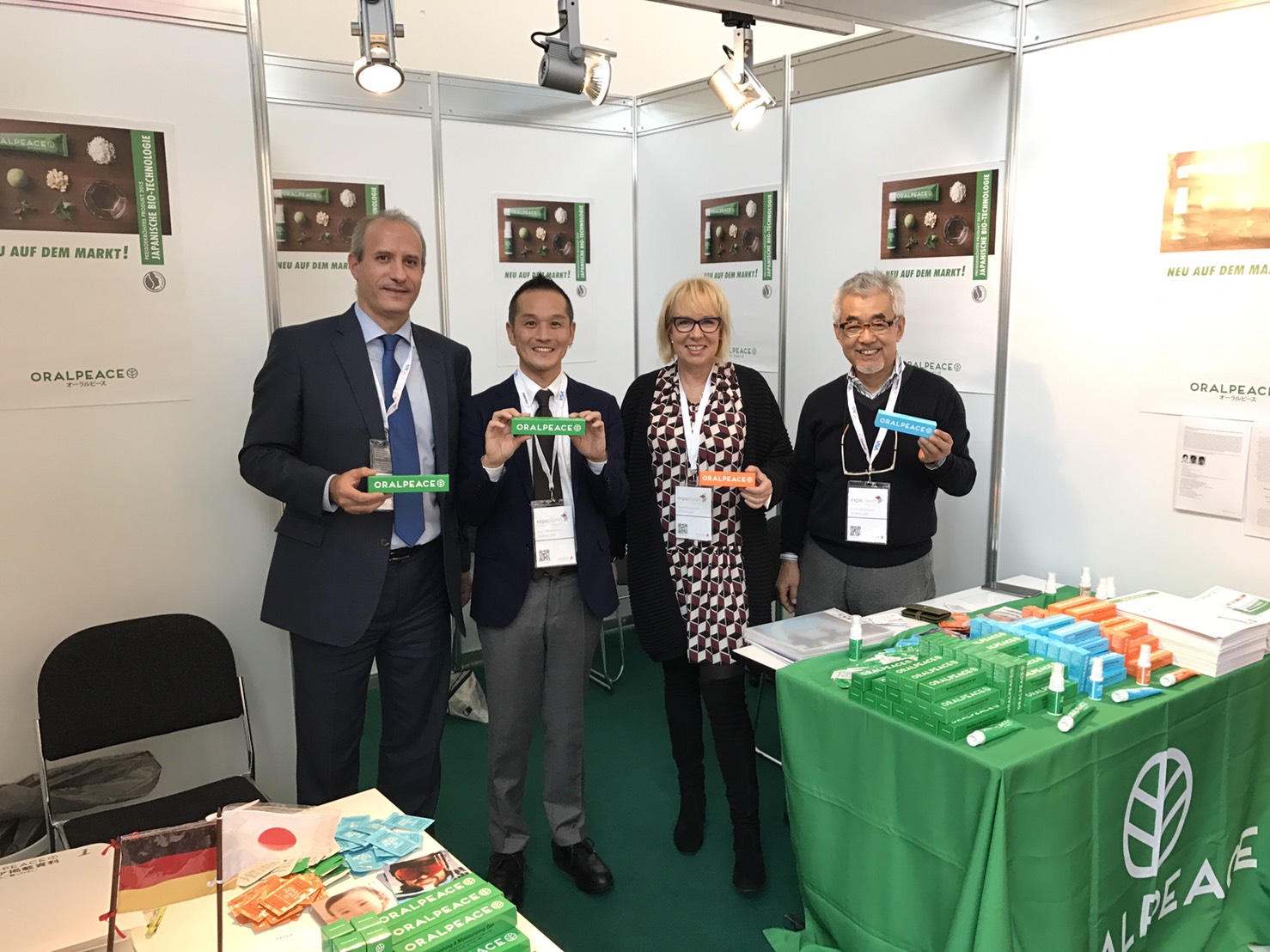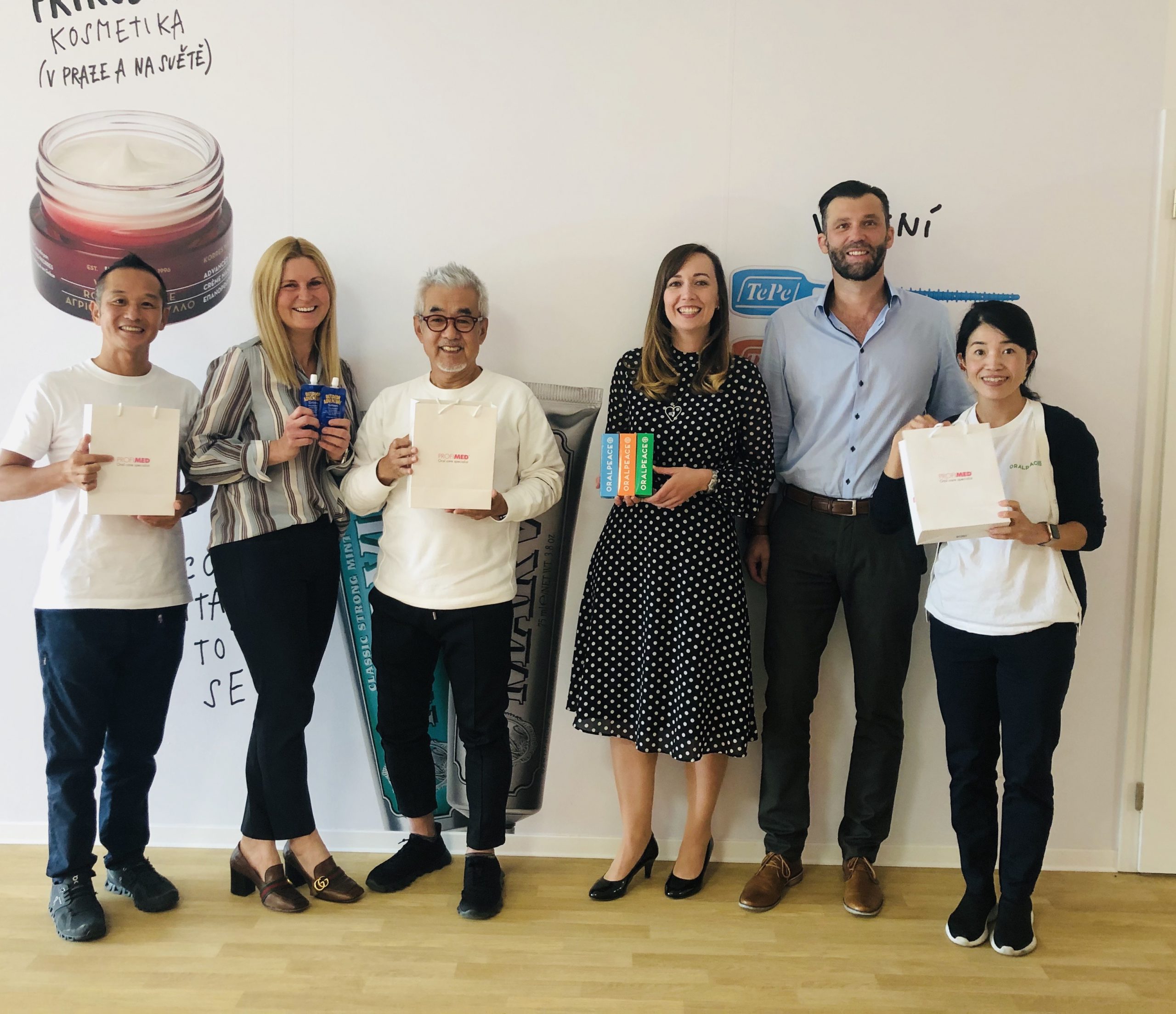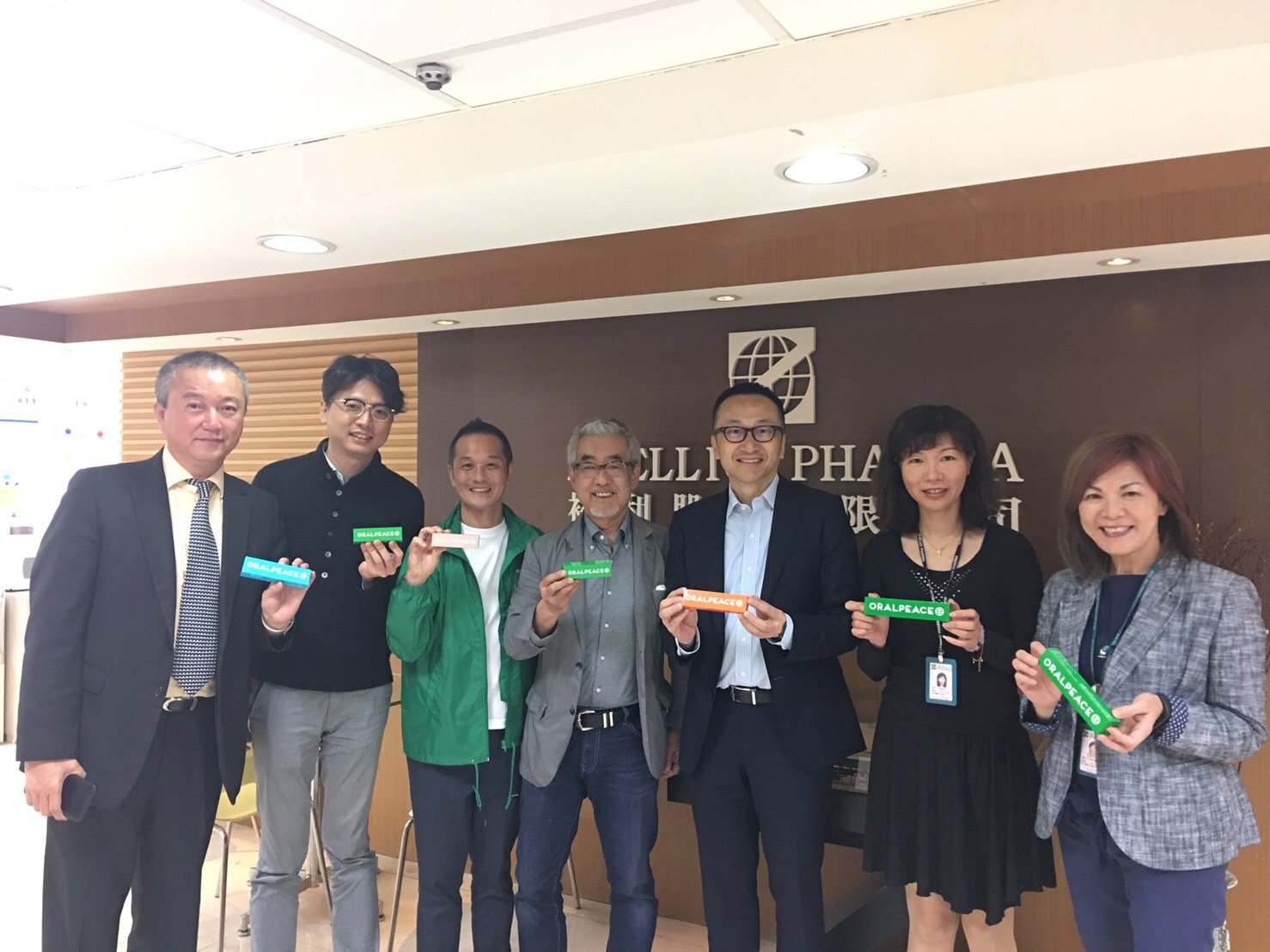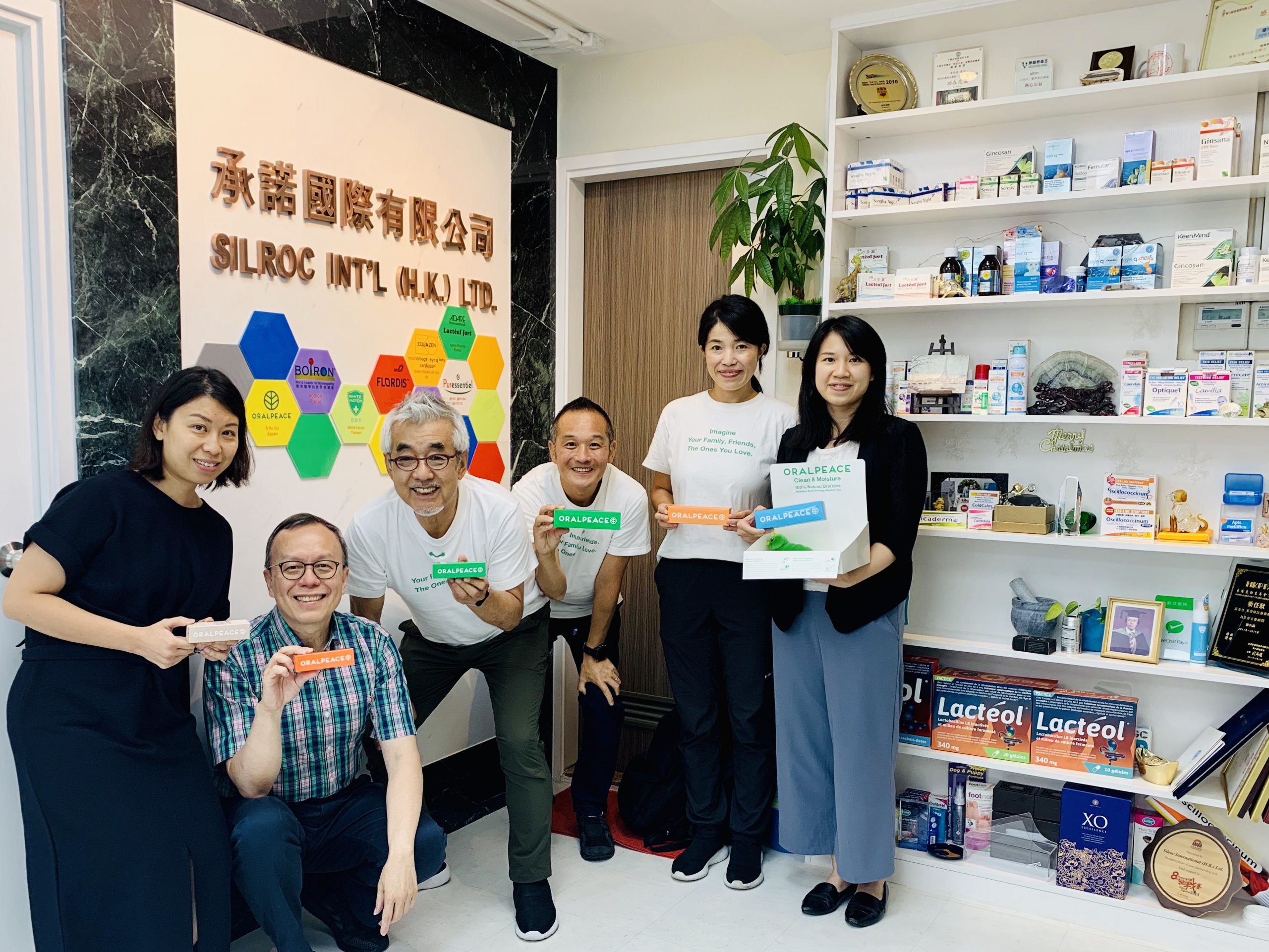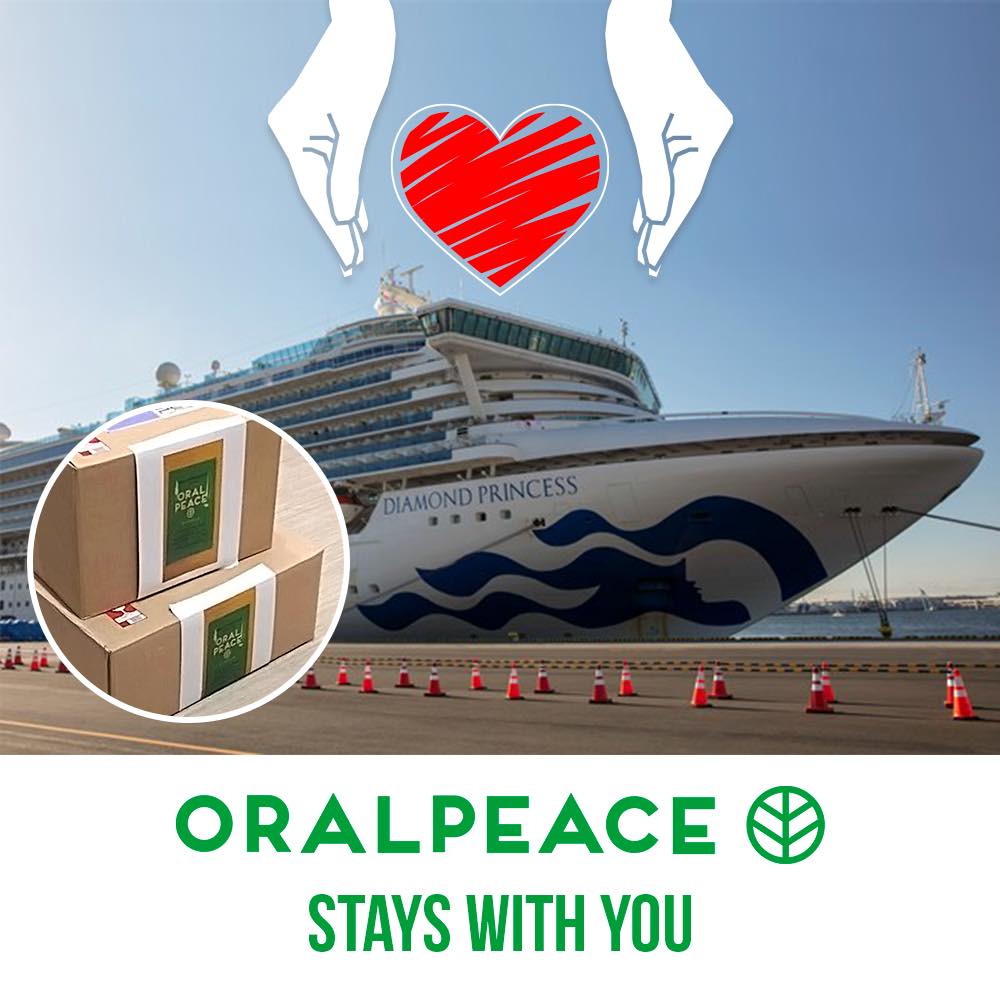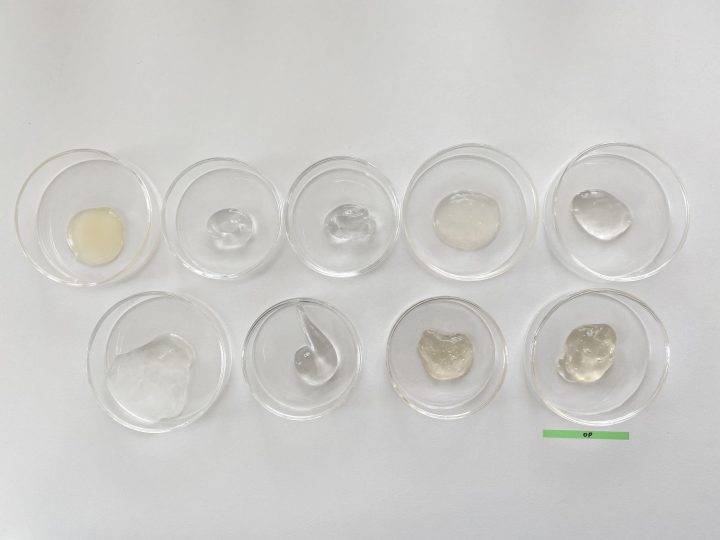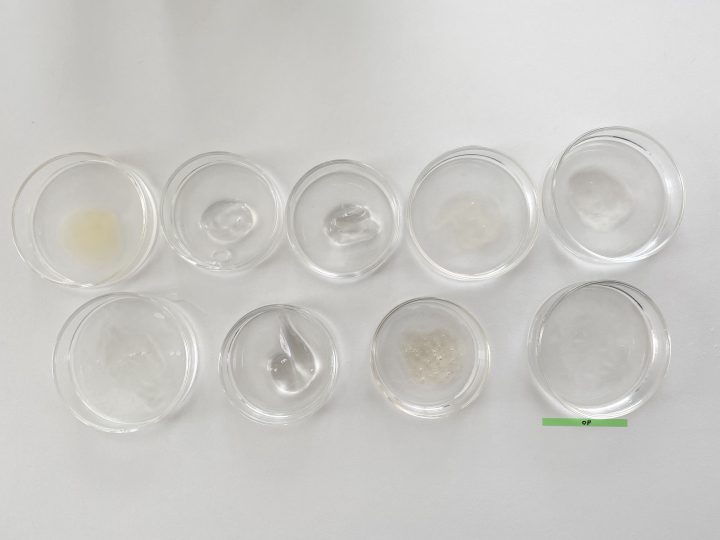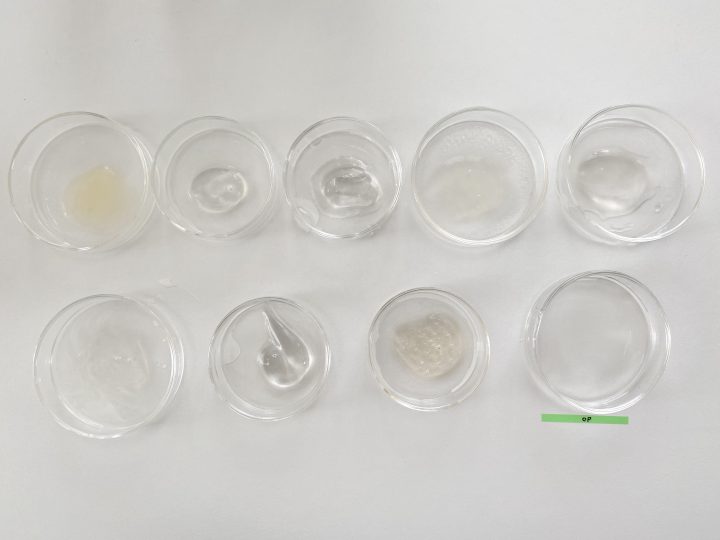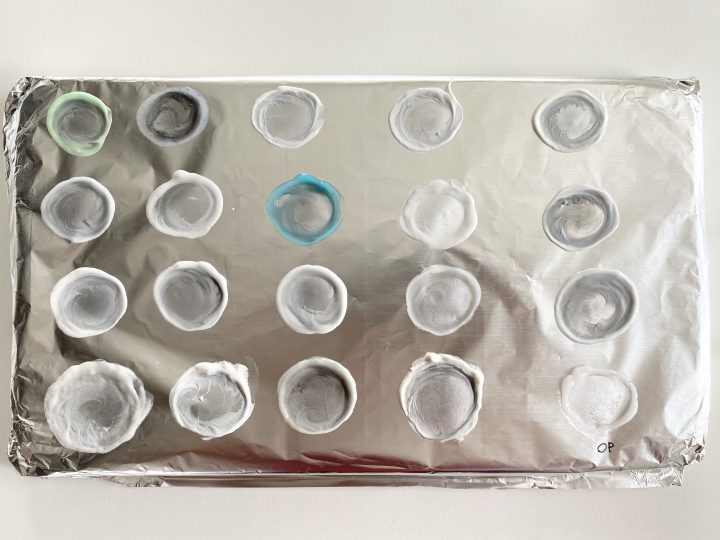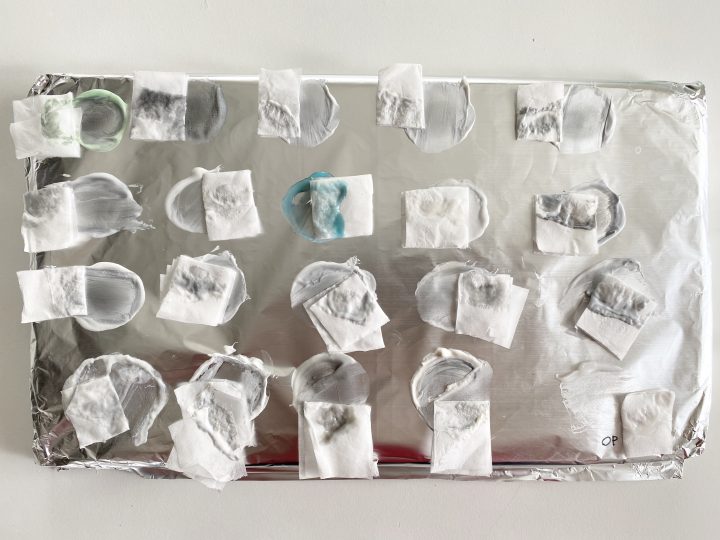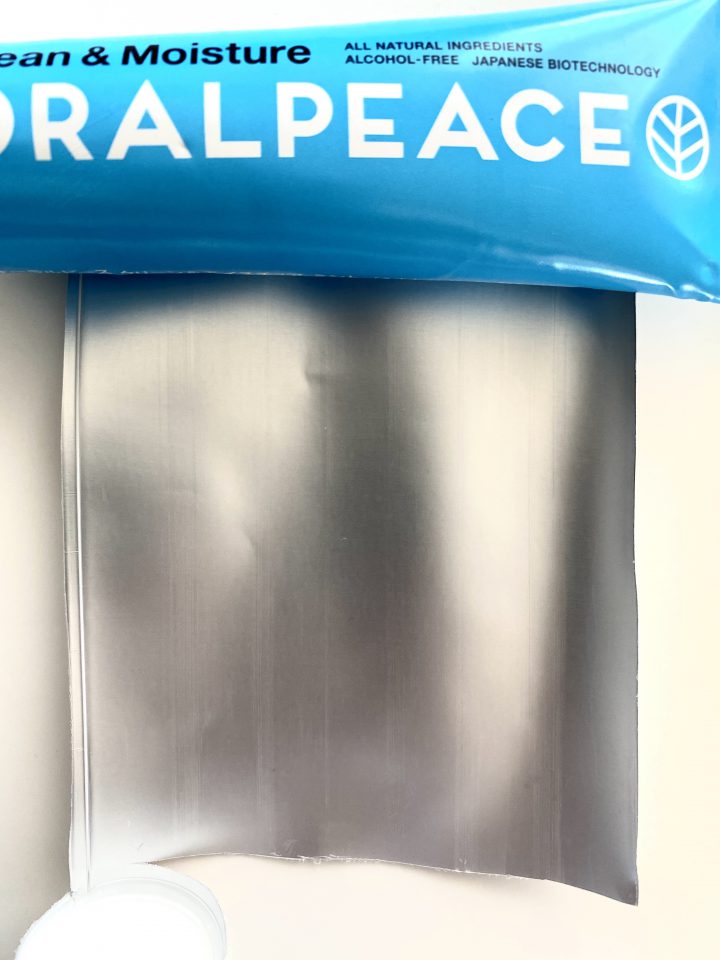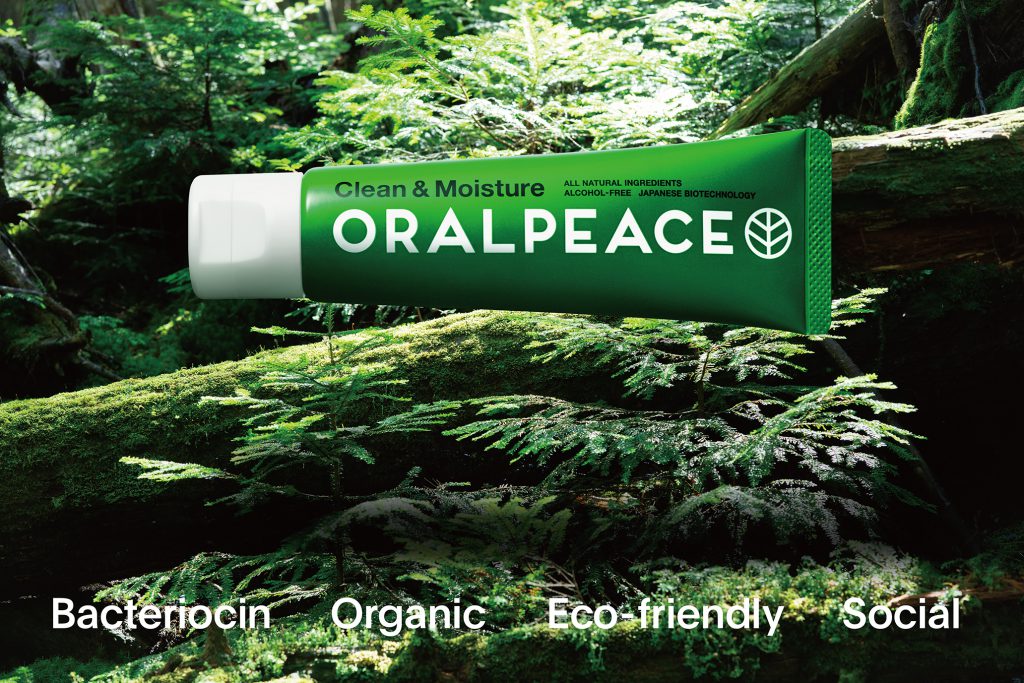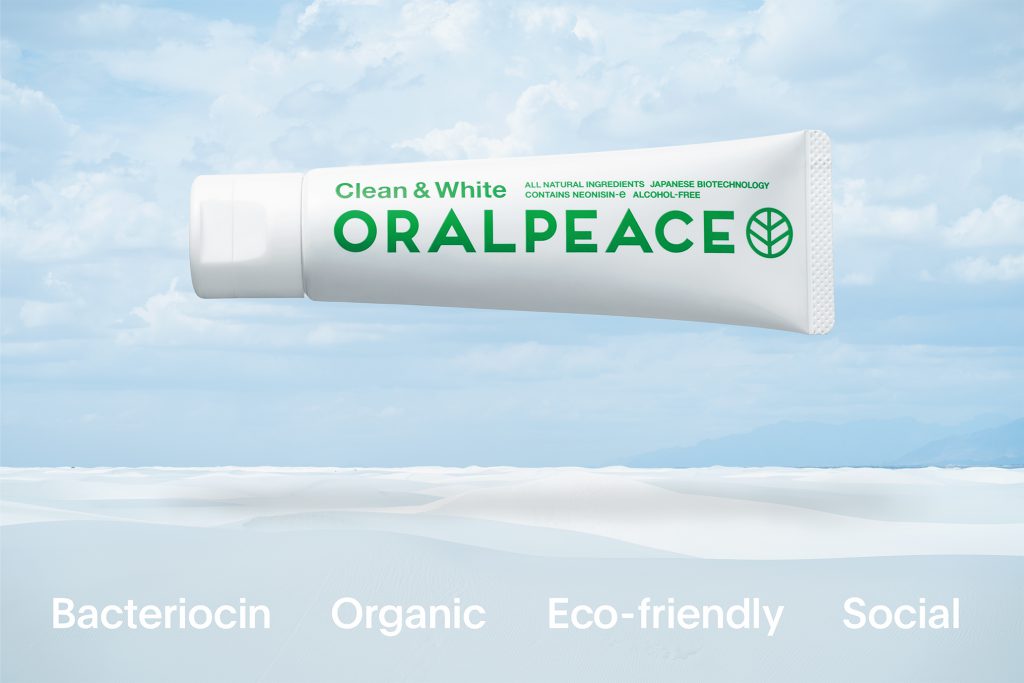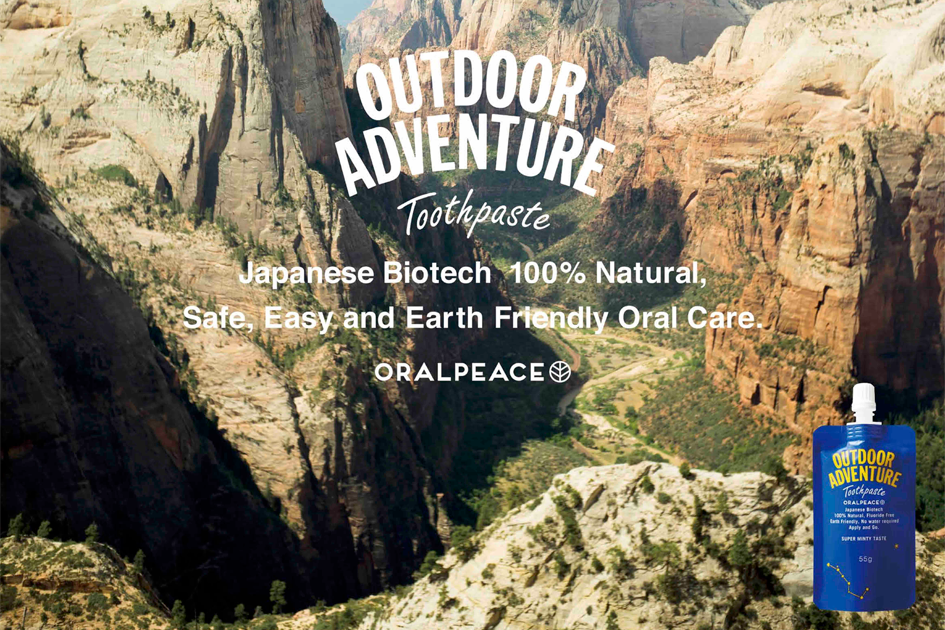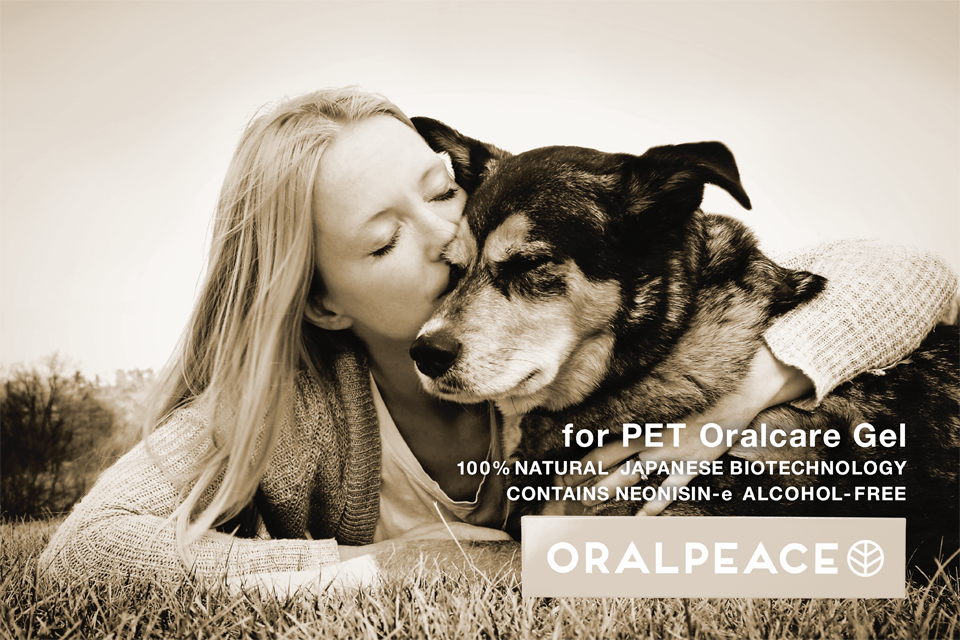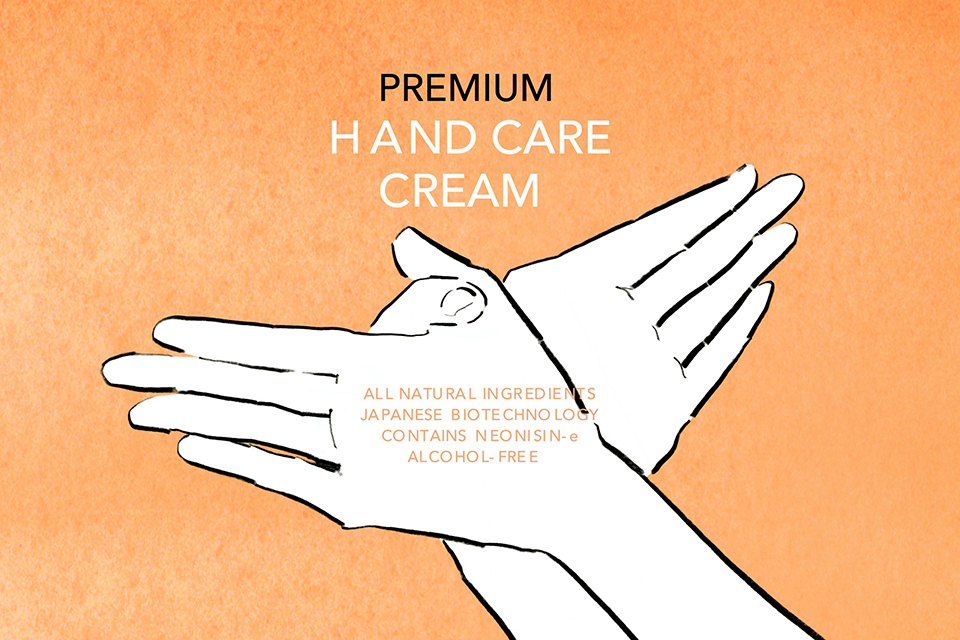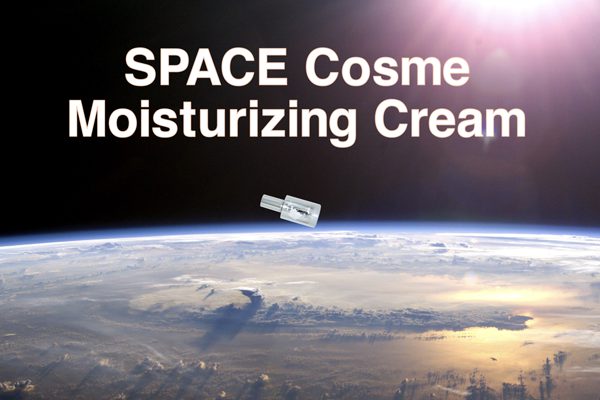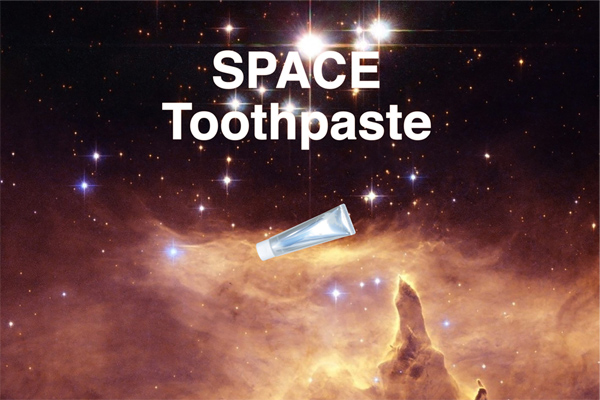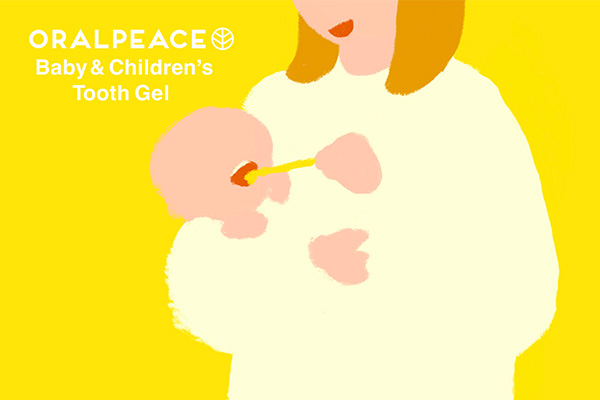ORALPEACE
Clean&Moisture
Japanese innovative bacteriocin
(lactic acid bacteria antibacterial peptide)
safety chemical-free oral-care gel/liquid
made from 100% plant-based food ingredients
ORALPEACE Clean & Moisture (oral care gel, mouth spray & wash) is an oral care product containing the patented lactic acid bacteria antibacterial peptide (bacteriocin) formulation “Neonisin-e®︎”.
It was invented through more than 20 years of research into lactic acid bacteria biotechnology to control bacteria by Professor Kenji Sonomoto, who has a doctorate in engineering and has served as professor emeritus at National Kyushu University, president of the Japan Lactic Acid Bacteria Society, and president of the Japanese Society of Bioengineering.
“Neonisin-e®” is a patented formulation created from nisin, an antibacterial peptide (bacteriocin) that has been approved as a food by health organizations around the world, and is used to treat oral infections such as Streptococcus mutans, Pg bacteria, Candida bacteria, Escherichia coli, and Staphylococcus aureus. It instantly approaches the bacteria that cause problems at ultra-low concentrations, more so than conventional antibiotics, synthetic bactericides, and phytotoxic antibacterial agents. However, toothpaste and oral care products are 100% food ingredients and chemical-free (no chemical ingredients) that are safe to swallow.
Japan’s cutting-edge lactic acid bacteria antibacterial peptide research and green technology have solved the conflicting issues that could not be overcome with conventional chemical technology: “effectiveness against causative bacteria at ultra-low concentrations, high biodegradability, and safety.”
It is an oral hygiene brand born in Japan that is kind to the body and nature, and is in a new era of environmentally friendly development, creating new possibilities for the sustainable development of humanity through an invention that is unique in the world.
The project members were inspired by the birth of a child with a disability and by witnessing the oral problems of his father, who was battling terminal cancer.
In response to the needs of medical and nursing care settings for people who have difficulty gargling, spitting, and oral care, they want to use ingredients that are safe to absorb into the body and do so without burdening them.
Industry-academia-government collaboration with Kyushu University Graduate School of Agriculture, Kagoshima University Graduate School of Medical and Dental Sciences, National Center for Geriatrics and Gerontology, Oral Disease Research Department, etc.
Projects ranging from basic research to clinical applications are made up of medical, engineering, agricultural, dental, pharmaceutical, medical, dentist, veterinarian, dental hygienist, nurses, caregivers, speech therapists, etc.
Developed in 2013 after more than 10 years of research, based on cutting-edge lactic acid bacteria biotechnology research conducted through industry-academia-government collaboration at Japanese national research institutes.
Through technological innovation originating in Japan, we are improving the oral environment of many people around the world, leading to healthier lives and extending healthy lifespans.
Reducing the burden on daily medical care and caregivers, reducing nursing care costs that approach 10 trillion yen annually in Japan alone, preventing infection and aggravation through oral care.
Through our business, we create jobs for people with disabilities across the country who have low incomes in our main business, promote sustainable initiatives aimed at increasing their income, and engage in social activities through our business, such as supporting disaster-stricken areas and protecting the beautiful global environment.
We has won various awards including the Yokohama Business Grand Prix Grand Prize, the Japan Venture Award Grand Prize, the Japan Agricultural Science and Technology Award, the Good Design Award, and the Social Products Award.
It has been adopted by medical institutions and ICUs across Japan, including general hospitals, dental clinics, and pharmacies, including the National Research Center for Child Health and Development, Tokyo Medical and Dental University Hospital, and the University of Tokyo Hospital.
In addition, it is safe to swallow, can be used without water, is highly biodegradable, and is gentle on the body and the environment, making it suitable not only for the elderly and those fighting diseases.
Useful for people who are concerned about their family’s health, those who do not want to ingest chemical ingredients, infants, pregnant women, breastfeeding mothers, disaster-stricken areas where water use is limited, outdoor activities such as mountain climbing, and pets that are important family members.
Our products are not only available at welfare facilities nationwide, but also at department stores such as Isetan,GoodDesignStoreTOKYO, and Hands, as well as advanced select shops nationwide.
Furthermore, as an innovative made-in-Yokohama-Japan product, it is exported to 15 countries around the world, including Europe and America, and is loved by people all over the world.
In December 2020, it was selected by the Japan Aerospace Exploration Agency (JAXA) to be installed on the International Space Station (ISS), and will be used to maintain the health of astronauts while living in space. We also support expansion.
With this one item, you can use daily oral care and tooth brushing to clean your mouth, moisturize your mouth, prevent bad breath, periodontal care, tongue care, mucous membrane care, prevent cavities, massage your mouth, and dry your mouth. At the same time, we provide total care, including mouse prevention, saliva support, aspiration lung trouble prevention, infection and aggravation prevention care, and beautiful and healthy teeth.
Based on the research results of Japan’s national universities, we will respond to the needs of people who care about their health, the needs of medical and nursing care settings, the oral hygiene needs of the world in the era of the new coronavirus, and the new tooth brushing and oral care needs of humans in the age of living in space.
Streptococcus mutans in the oral cavity, Pg bacteria, bacteria that cause periodontal problems, Escherichia coli, bacteria that cause aspiration lung problems, bacteria that cause bad breath, Candida bacteria, etc.
More than conventional antibiotics, synthetic bactericides, and phytotoxic antibacterial agents,
While instantly approaching with ultra-low concentration,
When swallowed, it is quickly broken down and digested into amino acids in the intestinal tract.
Protects intestinal flora, which is the source of immunity, without sterilizing it.
Safe with no side effects
Contains “Neonisin-e®”, a patented lactic acid bacterium peptide formulation produced by lactic acid bacteria derived from clean plant foods, discovered in “okara” produced in Fukuoka Prefecture.
All products are domestically produced with highly traceable safe ingredients, water and plant-derived ingredients, food ingredients, and organic ingredients, so they taste delicious.
Contains a moisturizer that enhances the cleaning action of saliva, prevents stains (pigments) from adhering, and maintains white teeth.
Prevents bad breath by moisturizing the oral cavity, which tends to dry out from breathing through the mouth while wearing a mask.
Contains no abrasives so it won’t scratch your precious enamel, prevent hypersensitivity, and won’t damage ceramic teeth.
It polishes well without using any foaming agents, leaving little residue.
A major feature of ORALPEACE is that it won’t upset your stomach even if you apply or spray it on your mouth to prevent bacterial growth and dry mouth while you sleep.
Chemical-free, realized through technological innovation and green technology from Japanese industry, academia, and government.
Also, since no alcohol (ethanol) is added, everyone can use it.
It does not contain fluorine (a titanium corrosive component), so it can be used on implants.
It can also be used in disaster-stricken areas and spacecraft where water availability is limited.
Contains no synthetic disinfectants or chemical substances that are difficult to decompose.
It does not accumulate in the body, and even if it is discharged into the natural environment, it is quickly biodegraded by microorganisms and does not affect the beautiful natural microbial ecosystem of soil and water.
It is also an environmentally friendly SDGs-compliant product that does not pollute the oceans where it is washed away and keeps the earth beautiful.
To someone you love.
People who are concerned about their family’s health and want safety in what they eat and put in their mouths on a daily basis. People who are concerned about daily health and preventive care.
For elderly people who need care who have difficulty gargling or spitting, who are worried about aspiration or swallowing, people who are battling illness, and in medical and nursing care settings.
Infants who swallow toothpaste, people who are sensitive to chemical ingredients, and people who are pregnant, breastfeeding, or trying to conceive.
For those who are hypersensitive to chemical components, and those who are trying to prevent future hypersensitivity/allergies and avoid accumulation of chemical components in the body.
Moisturizes dry mouth caused by aging or side effects of medications. To prevent lung problems caused by aspiration.
For the first tooth brushing of a baby whose teeth have begun to grow. Also for pets, who are important family members. Also suitable for vegans.
Also suitable for disaster sites where water is valuable, outdoors, and life in space. Also for those who want to protect the beautiful environment of the earth.
Also, oral care can be used to prevent viral infections.
The spray can be used to easily treat bad breath, cavities, periodontal conditions, moisturizing, and lung troubles such as aspiration. You can also dissolve it in water and gargle as a mouthwash.
For your mouth and throat during cold season. Preventive care for your baby when going out. Also for easy care of bedridden people and children who have fallen asleep.
Products that are kind to your body and the earth and can be used every day by the whole family.
It’s also a product that makes you feel good.
FOR WHO?

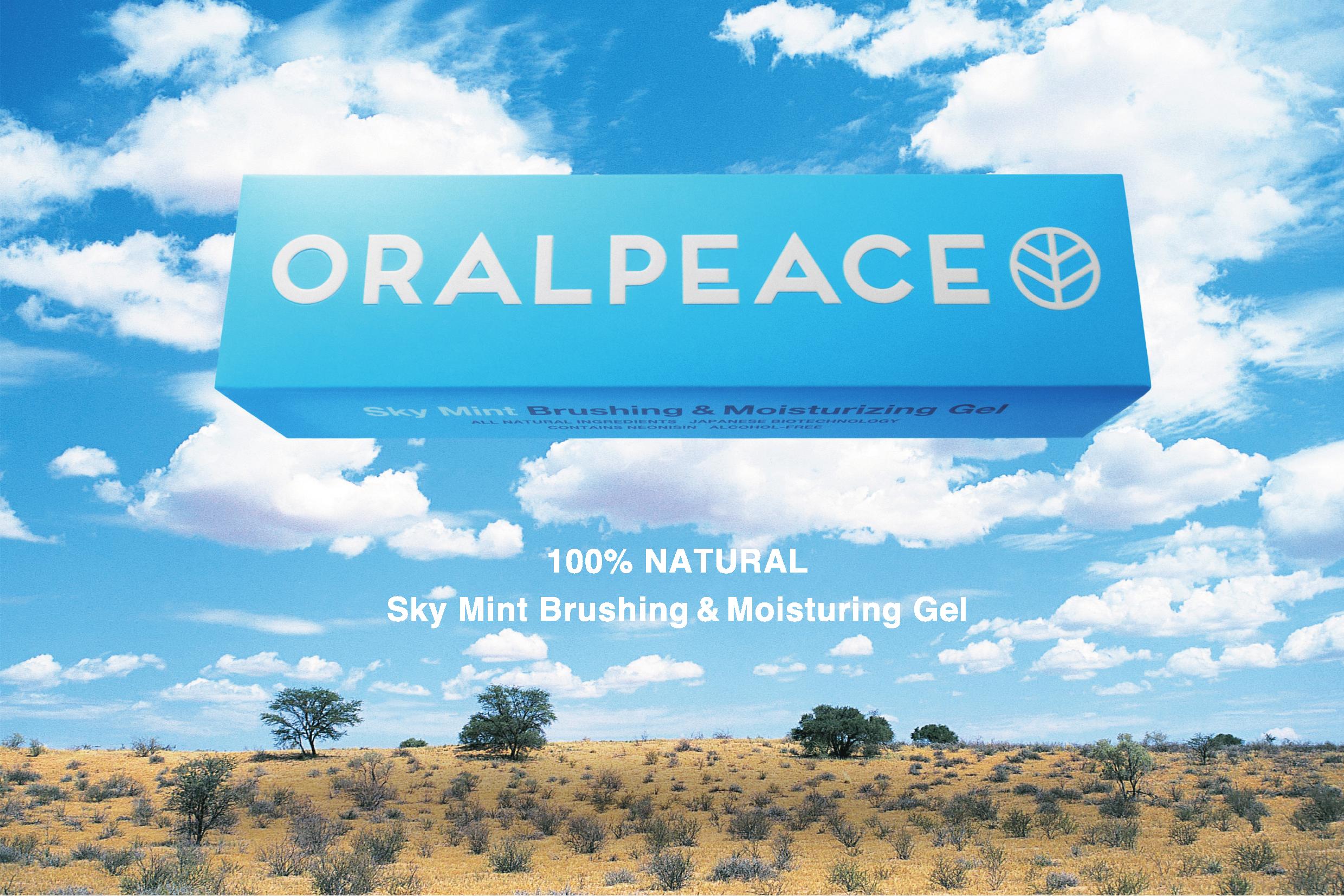
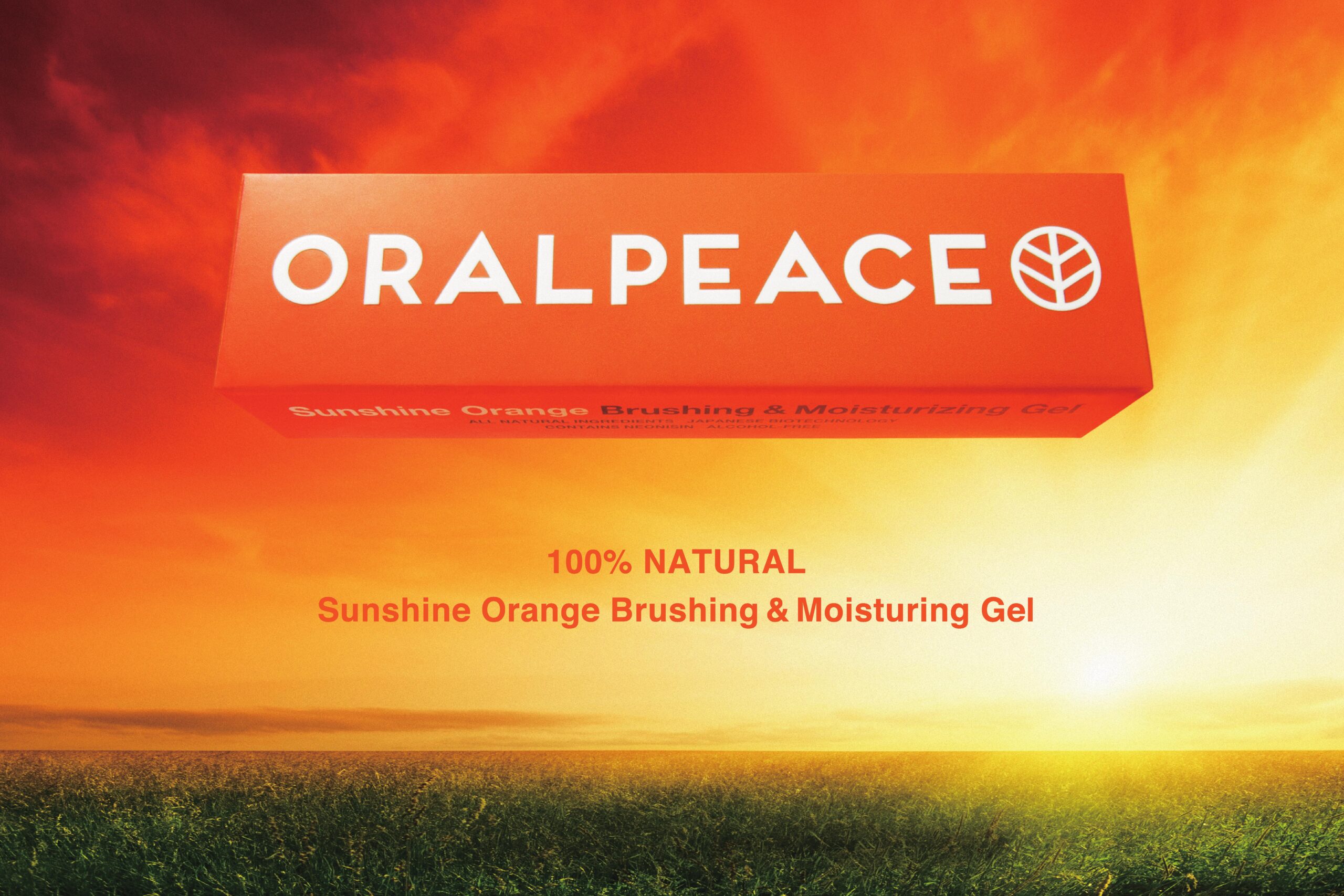
PRODUCT FEATURES
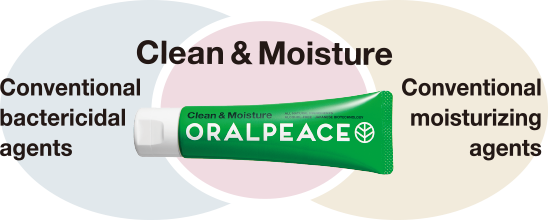
Daily oral care with this product only
Daily oral care at ease
Daily oral care that is not a burden
* Cleaning aid
Product Line up
Japanese innovative bacteriocin(lactic acid bacteria antibacterial peptide)
safety chemical-free oral-care gel made from 100% plant-based food ingredients
A 21st century toothpaste and oral care gel containing “Neonisin-e®*” that is easy, safe and effective for oral care, and is kind to the body and the environment.
With this one item, you can perform daily oral care and tooth brushing to clean your mouth, moisturize your mouth, prevent bad breath, periodontal care, tongue care, oral massage, mucous membrane care, prevent cavities, and dry your teeth. We provide total care at the same time, including mouse prevention, aspiration prevention, and infection prevention care.
Neonisin-e®* (Patent No. 5750552), a patented lactic acid bacteriocin formulation derived from plant foods, spreads throughout the mouth, teeth, interdental areas, periodontal areas, and tongue, cleaning areas that are difficult to reach with tooth brushing alone. Moisturizes the oral cavity and keeps it healthy.
Contains “Neonisin-e®*” to prevent cavities and bad breath and provide periodontal care.
Brushing whitens your teeth and freshens your breath.
Oral care prevents lung problems caused by aspiration, and keeps the oral cavity, which tends to become dry, moisturized and healthy.
It polishes thoroughly without using foaming agents, abrasives, or irritating ingredients, leaving little residue and leaving you with a refreshing and refreshing feeling.
Especially before going to bed, we recommend cleaning between your teeth using an interdental brush or floss while keeping it in your mouth.
If possible, clean your tongue with a tongue brush (or a toothbrush).
It is also effective to spread a small amount over the entire mouth, teeth, interdental areas, periodontal areas, and tongue after rinsing.
It spreads well and has a refreshing aftertaste.
A major feature of ORALPEACE is that it won’t upset your stomach even if you apply it to your mouth and sleep to prevent bacterial growth and dry mouth.
The next day after carefully caring for your mouth with Oral Peace and resting, you will notice a change in your bad breath and the freshness of your mouth when you wake up.
When your mouth feels good, the air, water, food, and alcohol taste better.
Have a nice and healthy day!
Delicious, natural, gentle and refreshing taste
Clean & Moisture Toothbrushing & Oral Care Gel

All ingredients
Glycerin* (moisturizer), water, lactic acid coccus culture extract** (Main ingredient of the patented formulation “Neonisin-e®︎”, invented in industry-academia collaboration with Kyushu University, the world’s only colorless, transparent, tasteless, odorless, and highly Stable “Highly Purified Nisin A”, cleaning aid, product preservation performance aid), xanthan gum* (thickener), plum fruit extract* (patented formulation “Neonisin-e®” aid, cleaning aid, product) (preservation aid), Caesarpinia spinosa gum* (thickener), peppermint oil*** (product preservation aid, flavoring agent), spearmint oil*** (product preservation aid, flavoring agent), damask rose flower Oil*** (patented formulation “Neonisin-e®︎” auxiliary agent, product preservation performance aid, flavoring agent) *Plant-derived **Plant-derived lactic acid bacteria-derived ***Organic ingredients
●A delicious and refreshing taste of gentle natural mint. For daily tooth brushing and oral care for the whole family. For oral care in medical and nursing care settings. It can be safely used by everyone from newborns to the elderly.
Delicious, Juicy yuzu (Japanese citrus) and lemon taste Baby&Children-friendly taste
Clean & Moisture Orange Toothbrushing & Oral Care Gel

All ingredients
Glycerin* (moisturizer), water, lactic acid coccus culture extract** (Main ingredient of the patented formulation “Neonisin-e®︎”, invented in industry-academia collaboration with Kyushu University, the world’s only colorless, transparent, tasteless, odorless, and highly Stable “Highly Purified Nisin A”, cleaning aid, product preservation performance aid), xanthan gum* (thickener), plum fruit extract* (patented formulation “Neonisin-e®” aid, cleaning aid, product) Preservation performance aid), Caesarpinia spinosa gum* (thickening agent), orange oil* (flavoring agent), lemon peel oil* (flavoring agent), yuzu peel oil* (flavoring agent), peppermint oil*** (product) Preservation performance aid, flavoring agent), damask rose flower oil*** (patented formulation “Neonisin-e®︎” aid, product preservation performance aid, flavoring agent) *Plant-derived **Derived from vegetable lactic acid bacteria ***Organic ingredients
●The juicy flavor of yuzu and orange is popular among children and women who don’t like mint flavor. Natural flavor with no chemical additives that will please even children who hate brushing their teeth. Also suitable for newborns’ first tooth brushing and oral care. It can be used by the whole family, from babies to the elderly.
Delicious, cool and refreshing taste Clean and refreshing, prevents bad breath
Clean & Moisture Mint Toothbrushing & Oral Care Gel

All ingredients
Glycerin* (moisturizer), water, lactic acid coccus culture extract** (Main ingredient of the patented formulation “Neonisin-e®︎”, invented in industry-academia collaboration with Kyushu University, the world’s only colorless, transparent, tasteless, odorless, and highly Stable “Highly Purified Nisin A”, cleaning aid, product preservation performance aid), xanthan gum* (thickener), plum fruit extract* (patented formulation “Neonisin-e®” aid, cleaning aid, product) (preservation performance aid), Caesarpinia spinosa gum* (thickener, derived from legumes), Mentha oil*** (product preservation performance aid, flavoring agent), Spearmint oil*** (product preservation performance aid, flavoring agent) ), damask rose flower oil*** (patented formulation “Neonisin-e®︎” auxiliary agent, product preservation performance aid, flavoring agent) *Plant-derived **Plant-derived lactic acid bacteria-derived ***Organic ingredients
●It has a cool and refreshing mint flavor that is popular among people who are not satisfied with the refreshing feeling of original (green) or orange. It does not contain any abrasives and can be used as a toothpaste gel to prevent sensitivity and is gentle on the gums, oral mucosa, and enamel.
Japanese innovative bacteriocin(lactic acid bacteria antibacterial peptide)
safety chemical-free oral-care liquid made from 100% plant-based food ingredients
A 21st century toothpaste and oral care gel containing “Neonisin-e®*” that is easy, safe and effective for oral care, and is kind to the body and the environment.
A high-performance oral care spray containing “Neonisin-e®*” that allows easy oral care for people who are busy, going out, sleeping, or bedridden.
Through technological innovation and green technology from industry, academia, and government, we pursue effectiveness against trouble-causing bacteria and safety when swallowed.
Easy oral care, mouth moisturizing, and bad breath prevention for bedridden people and children who have fallen asleep during busy times. We pioneered a new product category in the world called “oral care when going out,” which is difficult to gargle or spit out.
As a product that aims to balance safety and functionality, it can also be used as a high-performance oral care spray when going out during the coronavirus pandemic.
With this one item, you can perform daily oral care and tooth brushing to clean your mouth, moisturize your mouth, prevent bad breath, periodontal care, tongue care, oral massage, mucous membrane care, prevent cavities, and dry your teeth. We provide total care at the same time, including mouse prevention, aspiration prevention, and infection prevention care.
Neonisin-e®* (Patent No. 5750552), a patented lactic acid bacteriocin formulation derived from plant foods, is distributed throughout the mouth, teeth, interdental areas, periodontal areas, and tongue, reaching areas that are difficult to reach with tooth brushing alone. Care helps keep teeth clean, prevents cavities and bad breath, provides periodontal care, and moisturizes the oral cavity to keep it healthy.
Spray directly into your mouth, then dilute with water and gargle as a mouthwash. Leaves you with a refreshing and refreshing feeling.
Especially before going to bed, we recommend cleaning between your teeth using an interdental brush or floss while keeping it in your mouth. If possible, clean your tongue with a tongue brush (or a toothbrush).
It is also effective to spread a small amount over the entire mouth, teeth, interdental areas, periodontal areas, and tongue after rinsing.
The next day after carefully caring for your mouth with Oral Peace and resting, you will notice a change in your bad breath and the freshness of your mouth when you wake up.
Also, if you spray it on saline and use it when gargling your nose, it will cleanse the nasal cavity and pharynx, so please try it.
When you refresh, your mouth and mind will be refreshed.
Have a nice and healthy day!
Delicious, natural, mild and refreshing taste
Clean & Moisture Spray Oral hygiene & moisturizing liquid
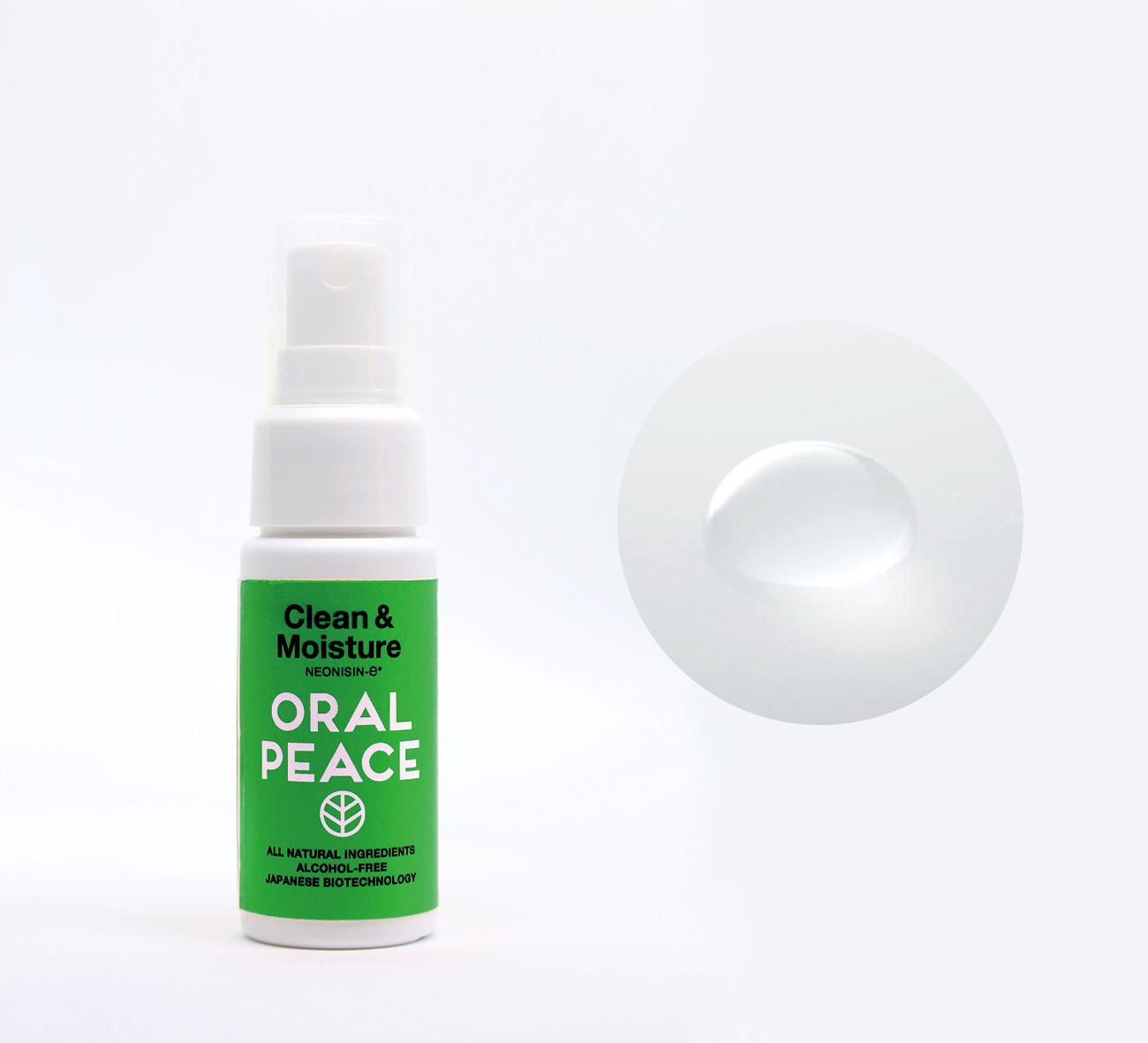
All ingredients
Glycerin* (moisturizer), water, lactic acid coccus culture extract** (Main ingredient of the patented formulation “Neonisin-e®︎”, invented in industry-academia collaboration with Kyushu University, the world’s only colorless, transparent, tasteless, odorless, and highly Stable “Highly Purified Nisin A”, cleaning aid, product preservation performance aid), plum fruit extract* (patented formulation “Neonisin-e®︎” aid, cleaning aid, product preservation performance aid), peppermint oil *** (product preservation performance aid, flavoring agent), spearmint oil*** (product preservation performance aid, flavoring agent), damask rose flower oil*** (patented formulation “Neonisin-e®︎” aid, product preservation performance) Auxiliary, flavoring agent) *Plant-derived **Plant-derived lactic acid bacteria-derived ***Organic ingredients
●A delicious and refreshing taste of gentle natural mint. For oral care in medical and nursing care settings. Can be used by the whole family.
Delicious, juicy yuzu (Japanese citrus) and lemon taste
Clean & Moisture Spray Orange Oral hygiene & moisturizing liquid
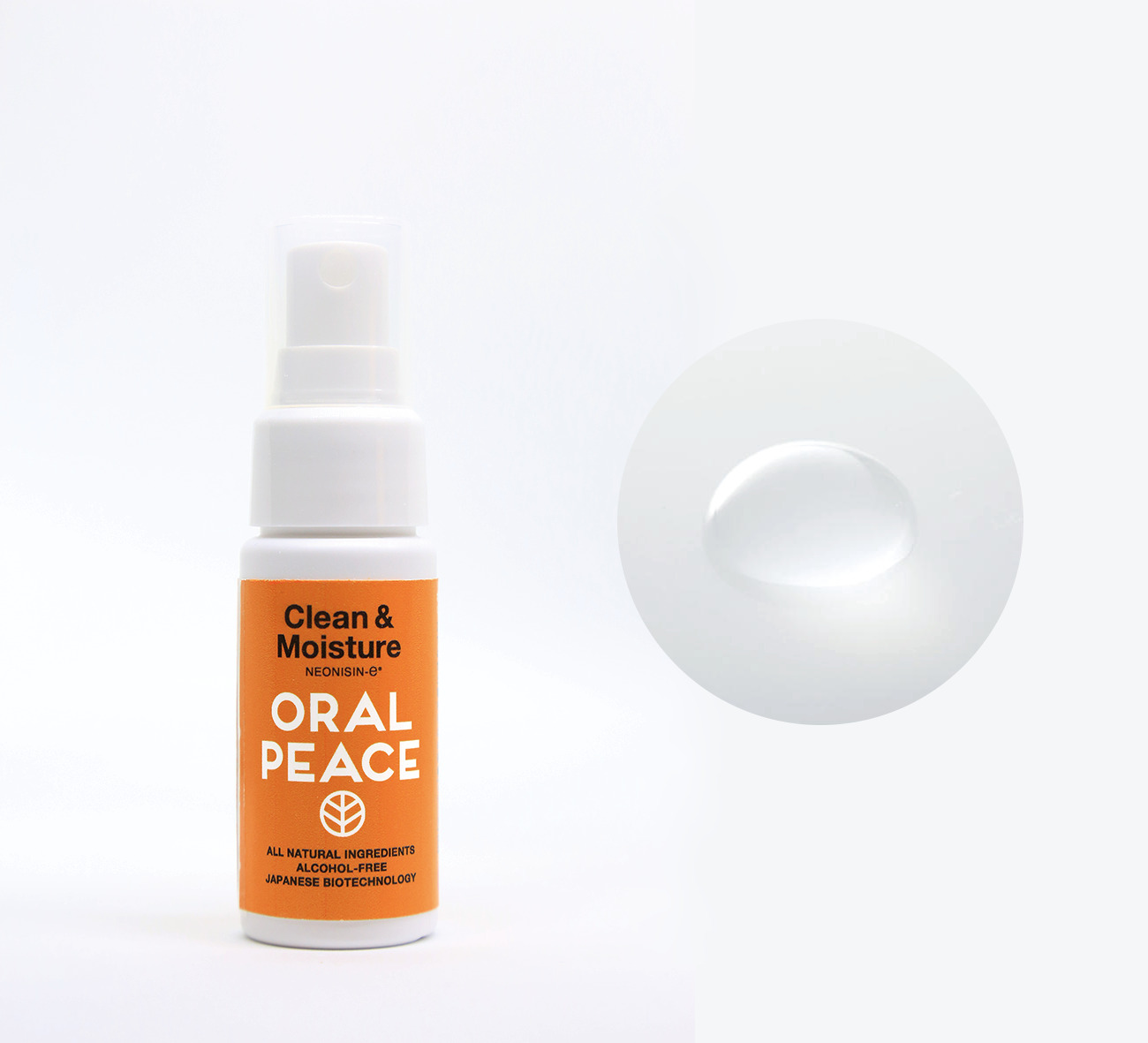
All ingredients
Glycerin* (moisturizer), water, lactic acid coccus culture extract** (Main ingredient of the patented formulation “Neonisin-e®︎”, invented in industry-academia collaboration with Kyushu University, the world’s only colorless, transparent, tasteless, odorless, and highly Stable “Highly Purified Nisin A”, cleaning aid, product preservation performance aid), plum fruit extract* (patented formulation “Neonisin-e®︎” aid, cleaning aid, product preservation performance aid), orange oil* (flavoring agent), lemon peel oil* (flavoring agent), yuzu peel oil (flavoring agent), peppermint oil*** (product preservation performance aid, flavoring agent), damask rose flower oil*** (patented formulation “Neonisin”) -e®︎” auxiliary agent, product preservation performance aid, flavoring agent) *Plant-derived **Plant-derived lactic acid bacteria-derived ***Organic ingredients
●The juicy flavor of yuzu and orange is popular among children and women who don’t like mint flavor. Also for preventive care of babies.
Delicious, cool and fresh taste
Clean & Moisture Spray Mint Oral hygiene & moisturizing liquid
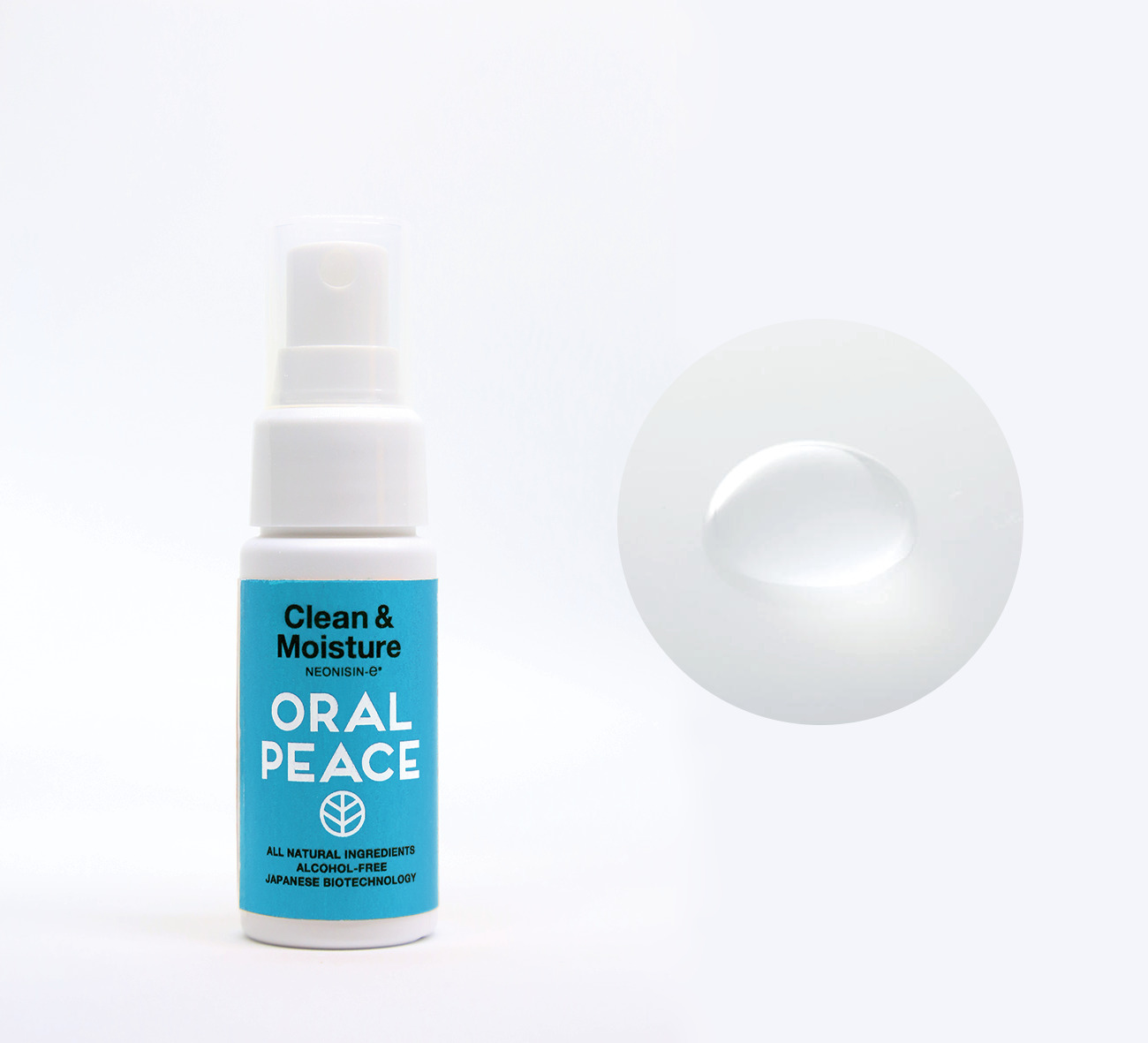
All ingredients
Glycerin* (moisturizer), water, lactic acid coccus culture extract** (Main ingredient of the patented formulation “Neonisin-e®︎”, invented in industry-academia collaboration with Kyushu University, the world’s only colorless, transparent, tasteless, odorless, and highly Stable “Highly Purified Nisin A”, cleaning aid, product preservation performance aid), plum fruit extract* (patented formulation “Neonisin-e®︎” aid, cleaning aid, product preservation performance aid), peppermint oil *** (product preservation performance aid, flavoring agent), damask rose flower oil*** (patented formulation “Neonisin-e®︎” aid, product preservation performance aid, flavoring agent) *Plant-derived **Derived from vegetable lactic acid bacteria * **Organic ingredients
● A cool and refreshing mint flavor that is popular with those who like minty refreshing feeling.
Designed by Noriteru Minezaki ((Studio))
The following ingredients are not used
ORALPEACE do not contain the following ingredients:
×Ingredients that are not approved for food that can be taken into the mouth
×Alcohol (ethanol, cause of dry mouth/avoidable for infants)
×Petroleum-derived ingredients
×Chemical substances
×Forever Chemical (PFAS)
×Cyanide(potassium cyanide, etc., poisonous substance, substance not permitted for food, substance prohibited from being released into the environment in ppm units)
×Potassium thiocyanate(Thyroid side effects, hazardous substance, substance prohibited from being mixed into food or released into the environment in ppm units, regulated by the U.S. Environmental Protection Agency in 2011, regulated by the European Union in 2014, and regulated by the Japan Ministry of Health, Labor and Welfare for hypothyroidism in 2021, the Japan Ministry of the Environment will classify it as an endocrine organ disruptor and prepare for regulations.)
×Hydrogen peroxide(deleterious substance, residual unlicensed substance in food, prohibited in Japanese toothpaste products in ppm units)×Enzymes such as lactoperoxidase and glucose oxidase that cause a chemical reaction with hydrogen peroxide and thiocyanate in the oral cavity to generate cyanide and sterilize E. coli(Thyroid side effects, Japan Ministry of Health, Labor and Welfare and Ministry of the Environment impact risk)
×Potassium iodide (Iodine, disinfectant, risk of side effects such as iodine poisoning and thyroid dysfunction)
×Formaldehyde (poisonous substance, bactericidal agent, there are cases where it is added to imported products in ppm units for antibacterial purposes due to carryover of preservatives from raw materials)
×Synthetic fungicides that disrupt the intestinal flora, which is the source of immunity, and are toxic in nature when released into the environment
×Synthetic disinfectants such as cetylpyridinium chloride (also known as cetylpyridinium chloride, CPC), benzethonium chloride, benzalkonium chloride, chlorhexidine gluconate, IPMP (isopropylmethylphenol), triclosan, methyl salicylate, lauroylsarcosine salt (LSS), etc.
×Chlorine, chlorine dioxide (CIO2), sodium chlorite, sodium hypochlorite, chlorine gas, etc. (deleterious substances, dangerous substances, bleach, pool disinfectants)
×Na hydroxide/K hydroxide (deleterious substance, caustic soda/potassium, strong alkali, biohazardous, corneal damage observed with 2% solution, prohibited substance remaining in food)
× Strong alkaline electrolyzed water (although it is water, it is strongly alkaline and there is a risk of damaging the oral cavity and visceral mucosa and diluting stomach acid if swallowed accidentally, so it is not used for oral care in medical care settings)
×Water-soluble synthetic polymers such as carbomer, sodium polyacrylate, and hydroxyethyl cellulose (liquid microplastics, may impede skin breathing, and are difficult to decompose in the environment as nanoplastics, posing risks to seafood and the body)
×Fluoride (European Union suggests an impact on children’s IQ and reproductive function; in the United States, the safe exposure limit for fluoride is 0.12 mg/kg body weight/day)
×Titanium dioxide, TI dioxide, titanium oxide, TI oxide (coloring agent, bleach, suspected of carcinogenicity, French government has banned its inclusion in food from 2020)
×Phosphorus (phosphates such as polyphosphoric acid, metaphosphoric acid, pyrophosphoric acid, bleach)
×Aspartame (artificial sweetener, WHO suggested it may be carcinogenic in 2023)
×Artificial sweeteners such as sorbitol, sucralose, maltitol, erythritol, and saccharin sodium (effects on intestinal bacteria, etc.)
×Xylitol (effect on intestinal bacteria)
×Paraben (paraoxybenzoic acid ester, methylparaben, butylparaben)
×Phenoxyethanol (synthetic preservative, substance not permitted for food)
×Sodium benzoate (synthetic preservative)
×Sorbic acid potassium (synthetic preservative)
×Pentylene glycol (synthetic preservative)
×Glycine (preservative/food additive chemically synthesized from formaldehyde and hydrogen cyanide)
×Poly-ε-lysine (polylysine, an antibiotic analog produced by fungi-like actinomycetes, preservative and food additive)
×Synthetic surfactants and foaming agents such as sodium lauryl sulfate, lauryl glucoside, cocamidopropyl betaine, and sodium cocoyl glutamate that pose risks of swallowing and environmental pollution.
×Soap base, soap such as coconut oil fatty acid K, olive fatty acid K, etc., foaming agent
×Abrasives (stones, microplastic beads, mud, salt, etc.) that can be swallowed, accumulate in the gums, or abrade too much enamel and risk hypersensitivity.
×Calcium carbonate (Ca carbonate, large-particle abrasive, limestone powder, powder for drawing white lines on playgrounds, raw material for chalk), zeolite (zeolite), sodium bicarbonate (baking soda), coral powder, shells, Abrasives (compound, stone powder, etc.) such as mud (clay, montmorinite), charcoal, microbeads (plastic), etc.
×Large amounts of hydroxyapatite (risk of absorbing and sterilizing microorganisms in septic tanks and sewage treatment plants when discharged into the environment; risk of environmental pollution when discharged into the natural world)
×Strong synthetic fragrances and chemical fragrances that can disguise signs of illness such as bad breath (treatment of the affected area is necessary for health)
×Chemical substances whose names are hidden and only written as “fragrances” and “preservatives” (medicinal and quasi-drugs are not required to list all ingredients, and display names and INCI names can be hidden)
×Synthetic fragrances and flavors such as grape and cola made from chemicals
×Solubilizers such as PEG (polyethylene glycol) and propanediol
×BG (butylene glycol) ×PG (propylene glycol)
×EDTA-2Na × etidronic acid × phytic acid × nanoparticles
×Synthetic colorants made from petroleum tar raw materials such as Blue No. 1 and Yellow No. 2
×Metals such as copper and silver, heavy metals, heavy metals
×Poisonous components of animals and plants (natural poisons) × Aconite (alkaloids)
×Essential oils and resins with distilled and concentrated plant toxicity ×Tea tree essential oil
×Hinokitiol (teratogenic risk, avoid for pregnant women and girls)
×Pine tar × Japanese cedar resin × Mastic resin × Eucalyptus essential oil × Wintergreen essential oil × St. John’s wort essential oil
×Yucca Schidigera extract (complex mixture of compounds, 2021 EU/European Food Safety Authority has determined that the effects of triterpenoid saponin and steroid saponin mixture (thyrotoxicity and male reproductive toxicity), serious skin and eye (suggests irritation and effects on aquatic organisms)
×Indigestible dextrin × Catechin × Tea leaves × Caffeine × Salt/Sea salt
×Insects, larvae, caterpillars, insect eggs, insect-derived raw materials × Honey, propolis × Saliva × Body fluids × Feces
×Animal-derived materials that sacrifice the tiny lives of other animals, such as bird eggs and animal placentas
×Animal-derived lactic acid bacteria (lactic acid bacteria derived from human/animal feces, intestinal tract, oral bacteria, dental plaque, etc. are not used)
×Lactic acid bacteria itself (no combination of live bacteria or dead bacteria, no evidence data on the immediate effect of lactic acid bacteria itself on oral bacteria)
×Limited natural biological raw materials such as corals in the marine environment
×Chemical substances that are toxic to the natural environment and biological ecosystems in the rivers and soil where they are discharged, and that indirectly affect human health from edible seafood and agricultural products.
×Chemical substances that the World Health Organization is considering regulating in the future due to their negative effects on the human body and the environment
*When purchasing products for the mouth of children, family members, or patients, please be sure to check the “all ingredients” (all ingredients contained in each product) of each product before making your selection. We recommend it.
*Also, some Internet search services are capable of various information manipulations such as SEO to prevent consumers from knowing the truth, so the same content can be used on new AI question answering services, etc. We encourage you to investigate the truth for yourself.
* Cleaning aid
How to use
Clean & Moisture (gel)
As a toothpaste gel
As with normal toothpaste, take an appropriate amount on your toothbrush after waking up, after eating, and before going to bed so that the gel spreads throughout your mouth, between your teeth, and your gums. Then brush it carefully. After brushing, lightly rinse.
Since it contains no foaming agent, it can also be used for careful brushing, electric toothbrush, and deciduous care.
Especially before going to bed, we recommend that you use an interdental brush or floss to clean the spaces between your teeth while still in your mouth. If possible, clean your tongue with a tongue brush (a toothbrush is fine). After rinsing, it is also effective to apply a small amount of gel over the entire mouth, teeth, interdental space, periodontium, and tongue again.
The day after resting after carefully taking care of your mouth with an oral piece, you will be able to feel the change in breath and mouth breath when you wake up.

As an oral care gel
Carefully check the condition of your mouth.
If you have a dry mouth, use water to moisten your mouth. It is effective to use “Clean & Moisture Spray” for dry stains.
When the dirt becomes soft, take an appropriate amount of Clean & Moisture on a care sponge brush etc. to clean the inside of the oral cavity.
As an oral moisturizing gel
After oral care and brushing, take an appropriate amount on a clean finger or sponge brush and apply it evenly in the oral cavity.
If the inside of the mouth becomes dry, the causative bacteria in the mouth will grow and cause troubles. Let’s keep moisturizing.
During bedtime, saliva is reduced and the causative bacteria in the oral cavity grow. It is more effective when applied before bedtime at night when the saliva is low and the mouth is dry.

As a tongue care gel
Gently clean your tongue with a soft or tongue brush.
Since it contains no abrasives or foaming agents, it can clean the tongue coating without damaging the taste buds or changing the taste, preventing bad breath.
Oral care videos for healthcare professionals and caregivers
「”Gum and oral massage method using oral pieces”」
Yoshida Dental Product News No. 224
Clinical Practice Techniques Prevention / PMTC
Target group: dentist, dental hygienist, nurse, caregiver, speech therapist, caregiver
Image courtesy of Kayo Uchida Dental Hygienist
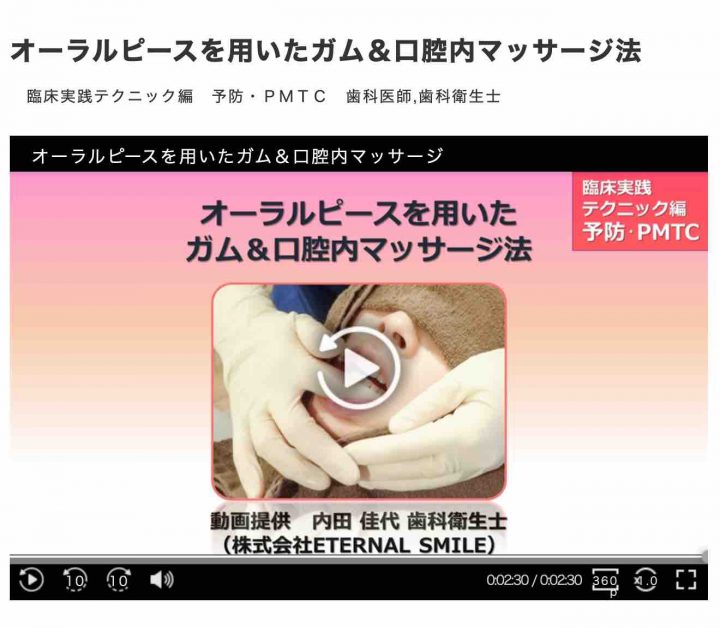
Clean & Moisture (spray)
As mouth spray
“When you can’t gargle right away” or in crowds. For preventive measures for babies. When you are worried about your mouth or when you want to moisturize, push it directly into your mouth as a mouth spray.
It doesn’t bother you to swallow only the food ingredients. It is also convenient to use in the precious outdoors of water. It does not leave a footprint on the environment when it is exhaled. You can use it on your throat during cold season.
In addition, especially before going to bed, we recommend that you use an interdental brush or floss to clean the spaces between your teeth with the oral piece in your mouth. If possible, clean your tongue with a tongue brush (a toothbrush is fine).
After rinsing, it is also effective to spread a small amount over the entire mouth, teeth, teeth, periodontium and tongue.
The day after resting after carefully taking care of your mouth with an oral piece, you will be able to feel the change in breath and mouth breath when you wake up.

As a mouth wash
Dilute about 3 pushes in about 20 ml of water in a cup and rinse for 30 seconds in the mouth.
It can also be used for cleaning dentures.
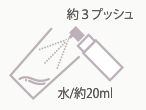
As an oral care spray
For oral care, you can use it directly to clean the dry side of the oral cavity or when you need easy oral care.
Regular spraying before going to bed or for bedridden people is also an easy way to use without taking hands.
Especially during sleep, it is a time when the causative bacteria in the mouth increase. Spraying before bedtime is also effective.
As a moisturizing spray
After oral care and brushing, spray into the oral cavity.
If the inside of the mouth becomes dry, the causative bacteria in the mouth will grow and cause troubles. Let’s keep moisturizing.
During bedtime, saliva is reduced and the causative bacteria in the oral cavity grow. When saliva is low and mouth is dry, it is more effective to use at night before bedtime.
As a tongue care spray
Spray on your mouth and gently clean your tongue with a soft or tongue brush.
You can clean the tongue coating without damaging the taste buds or changing the taste, and prevent bad breath.
Oral care videos for healthcare professionals and caregivers
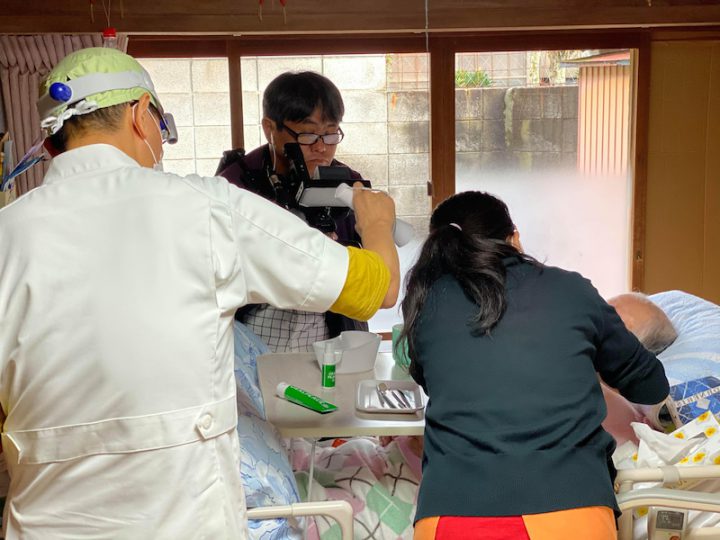
MEDIA INFORMATION
Other videos and articles can be viewed online.
